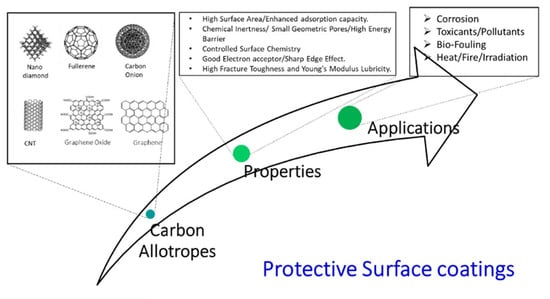Functionalized and Biomimicked Carbon-Based Materials and Their Impact for Improving Surface Coatings for Protection and Functionality: Insights and Technological Trends
Abstract
1. Introduction
2. Functionalized Carbon-Based Systems
2.1. Non-covalent Approaches for Functionalization
2.2. Covalent Approaches for Functionalization
3. Adaptation of Carbon as a Protective Coating via Surface Functionalization
3.1. Functionalized Coated Carbon for Anticorrosion Applications
3.2. Functionalized Carbon for Flame-Retardant Coatings
3.3. Functionalized Carbon for Enhanced Antifouling Coatings
3.4. Functionalized Carbon Coatings for Pollutant Adsorption
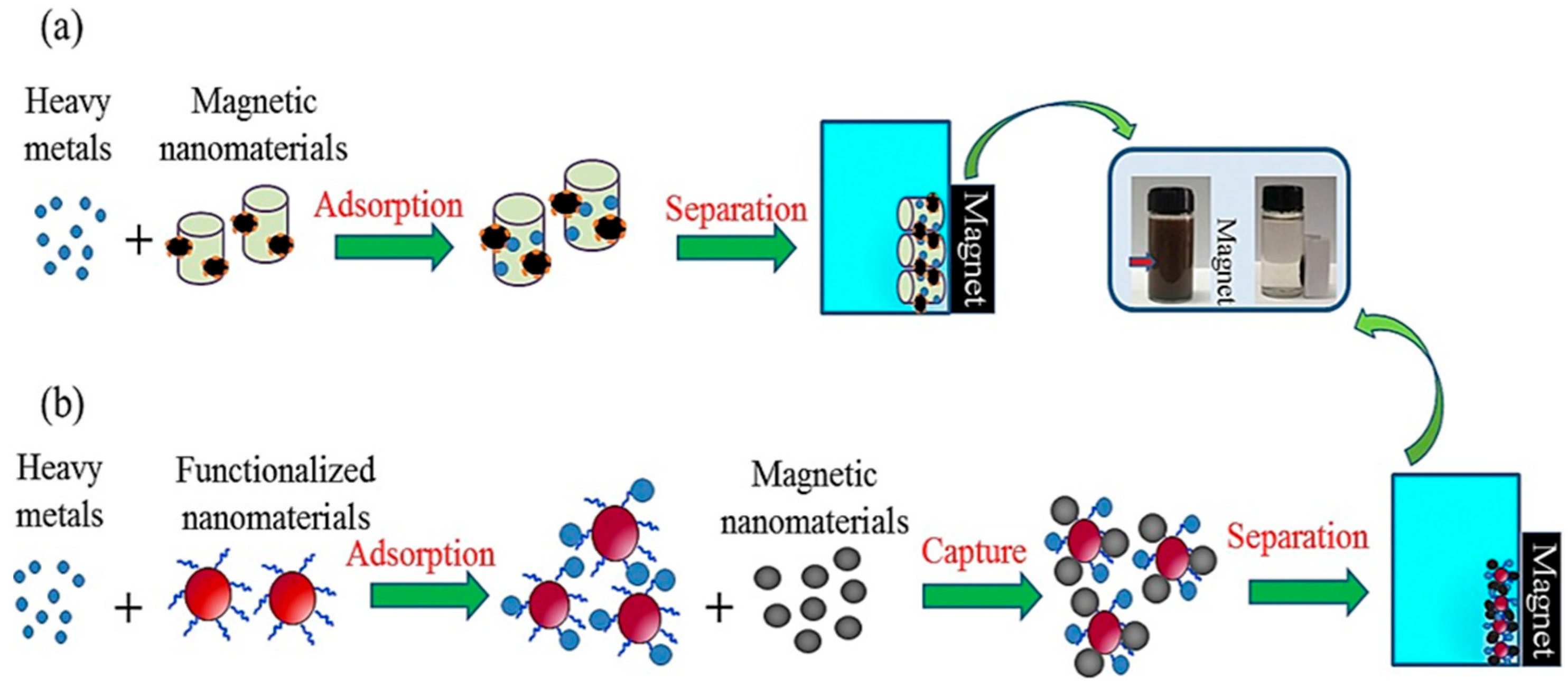
| S.N. | Carbon-Based nanomaterials | Surface Area (m2 g−1) | pH | Adsorption Capacity (mg g−1) | |
|---|---|---|---|---|---|
| Exp. | Cal. | ||||
| 1. | Pb (II) | ||||
| [123] | Multiwalled Carbon Nanotube | - | 6.0 | - | 15.9 |
| [124] | Acidified MWCNTs | 237.3 | 5.0 | 85.0 | 49.7 |
| [123] | Multiwalled Carbon Nanotube/VP | - | 6.0 | - | 37.0 |
| [125] | Multiwalled Carbon Nanotube/TiO2 | - | 6.0 | 4.6 | 137.0 |
| [126] | Carbon Nanotube/MnO2 | 275.0 | 5.0 | - | 78.7 |
| [127] | Single-walled Carbon Nanotube/COOH | 400.0 | 5.0 | - | 94.7 |
| [128] | Carbon Nanotube/Fe3O4-NH2 | 90.7 | 5.3 | 37.6 | 75.0 |
| [129] | Carbon Nanotube/Fe3O4-MPTS | 97.2 | 6.5 | 42.1 | 65.4 |
| [130] | Graphene Oxide | 430.0 | 6.8 | 328.0 | 367.0 |
| [130] | EDTA/Graphene Oxide | 623.0 | 6.8 | 479.0 | 525.0 |
| [130] | EDTA/Reduced graphene Oxide | 730.0 | 6.8 | 204.0 | 228.0 |
| [131] | Graphene Oxide/MnFe2O4 | 196.0 | 5.0 | - | 673.0 |
| [132] | Reduced graphene oxide/nZVI | - | 5.0 | 550.0 | 585.5 |
| [133] | CoFe2O4/Graphene Oxide | 212.7 | - | 81.3 | 82.3 |
| [134] | M-CHAP/Graphene Oxide | 106.0 | 4.5 | 244.5 | 246.1 |
| [135] | HMO/Graphene Oxide | 383.9 | 5.0 | 553.6 | 512.6 |
| [136] | Smart Magnetic Graphene | 165.0 | 6.5 | - | 6.0 |
| 2. | As (III) | ||||
| [137] | Iron oxide/Multiwalled Carbon Nanotube | - | 8.0 | 1.8 | 4.0 |
| [138] | Fe3O4/Multiwalled Carbon Nanotube | 70.1 | - | - | 53.2 |
| [139] | Fe/Multiwalled Carbon Nanotube | - | 7.0 | 210.0 | 200.0 |
| [140] | EDA/Multiwalled Carbon Nanotube/Fe2+ | 198.5 | 8.0 | 0.7 | N/A |
| [141] | MIO/Multiwalled Carbon Nanotube | 209.8 | 7.0 | 17.2 | 20.2 |
| [131] | Graphene Oxide/MnFe2O4 | 196.0 | 6.5 | - | 146.0 |
| [142] | Fe3O4/Reduced Graphene Oxide | 148 | 7.0 | - | 13.1 |
| [143] | HA/Reduced Graphene Oxide/Fe3O4 | 0.9 | 7.0 | 7.5 | 8.7 |
| [144] | HEG/electrodes | 442.9 | 6.1 | - | 138.8 |
| [145] | GAC/ZrO2 | 903.0 | 7.6 | - | 12.2 |
| [146] | Multiwalled Carbon Nanotube/ZrO2 | 152.0 | 6.0 | 9.8 × 10−2 | 2.0 |
| [147] | Fe3O4/Multiwalled Carbon Nanotube | 153.0 | 4.0 | 9.7 × 10−2 | 1.7 |
| 3. | As (V) | ||||
| [148] | Fe3O4/Multiwalled Carbon Nanotube | 70.1 | - | - | 39.1 |
| [149] | MIO/Multiwalled Carbon Nanotube | 209.8 | 7.0 | 36.3 | 40.8 |
| [139] | Fe/Multiwalled Carbon Nanotube | - | 7.0 | 220.0 | 200.0 |
| [131] | Graphene Oxide/MnFe2O4 | 196.0 | 4.0 | - | 207.0 |
| [147] | Graphene oxide/Fe(OH)3 | - | 4.0 | 23.8 | N/A |
| [142] | Fe3O4/Reduced graphene oxide | 148 | 7.0 | - | 5.83 |
| [143] | HA- Reduced graphene oxide/Fe3O4 | 0.9 | 7.0 | 16.0 | 61.7 |
| [144] | HEG/electrodes | 442.9 | 6.9 | - | 141.9 |
| [148] | Mg-Al LDHs/Graphene Oxide | 35.4 | 5.0 | 183.1 | 180.3 |
| [146] | Reduced graphene oxide/ZrO2 | 152.0 | 6.0 | 0.1 | 5.0 |
| [140] | EDA/Reduced graphene oxide/Fe2+ | 198.5 | 4.0 | 1.0 | 18.1 |
| [149] | Fe3O4/Reduced graphene oxide | 153.0 | 4.0 | 0.1 | 0.2 |
| [136] | Smart Magnetic Graphene | 165.0 | 6.5 | - | 3.3 |
| 4. | Hg (II) | ||||
| [150] | Oxidized Multiwalled Carbon Nanotube | - | 7.0 | - | 3.8 |
| [151] | Multiwalled Carbon Nanotube/COOH | - | 4.3 | 81.6 | 127.6 |
| [151] | Multiwalled Carbon Nanotube/OH | - | 4.3 | 89.4 | 120.1 |
| [152] | Multiwalled Carbon Nanotube/SH | - | 5.0 | 74.2 | 131.6 |
| [153] | Multiwalled Carbon Nanotube/iodide | 153.0 | 6.0 | 100.0 | 123.5 |
| [153] | Multiwalled Carbon Nanotube/S | 155.3 | 6.0 | 100.0 | 151.5 |
| [154] | Carbon Nanotube/MnO2 | 110.4 | 6.0 | 14.3 | 58.8 |
| [155] | KMnO4-DES/Carbon Nanotube | 199.4 | 5.5 | 187.0 | 250.5 |
| [156] | CS/Multiwalled Carbon Nanotube/COOH | - | 4.0 | 183.2 | 181.8 |
| [156] | CS/Multiwalled Carbon Nanotube | - | 4.0 | 167.5 | 169.4 |
| [129] | Multiwalled Carbon Nanotube/Fe3O4-SH | 97.2 | 6.5 | 63.7 | 65.5 |
| [157] | Tween 20-Au/graphite-Fe3O4 | - | - | - | 47.6 |
| 5. | Cr (VI) | ||||
| [158] | IL-oxi-Multiwalled Carbon Nanotube | 87.4 | 3.0 | 2.6 | 85.8 |
| [159] | Carbon Nanotube/CeO2 | - | 7.0 | 30.2 | 31.6 |
| [160] | DBSA-PANI/Multiwalled Carbon Nanotube | - | 2.0 | 49.5 | 55.6 |
| [161] | AC/Carbon Nanotube | 755.8 | 2.0 | 9.0 | 8.6 |
| [162] | AA/Carbon Nanotube | 203.0 | 2.0 | 142.8 | 264.5 |
| [163] | NH2-Fe3O4/Graphene Oxide | 43.6 | 4.5 | 27.3 | 32.3 |
| [164] | MC-N | 136.3 | 1.0 | 327.5 | N/A |
| [136] | Smart Magnetic Graphene | 165.0 | 6.5 | - | 4.9 |
| 6. | Cd (II) | ||||
| [165] | Raw Multiwalled Carbon Nanotube | 187.6 | 8.0 | 1.29 | 1.3 |
| [165] | Oxidized Multiwalled Carbon Nanotube | 78.5 | 8.0 | 22.32 | 22.4 |
| [165] | EDA/Multiwalled Carbon Nanotube | 101.2 | 8.0 | 21.23 | 21.7 |
| [166] | Al2O3 Multiwalled Carbon Nanotube | 109.8 | 7.0 | 0.948 | 27.2 |
| [167] | Single-walled Carbon Nanotube | 400.0 | 5.0 | - | 21.2 |
| [167] | COOH/Single-walled Carbon Nanotube | 400.0 | 5.0 | - | 55.4 |
| [168] | Oxidized Carbon Nanotube | 128.0 | 5.5 | - | 11.0 |
| [162] | AA/Carbon Nanotube | 203.0 | 7.5 | 200.0 | 229.9 |
| 6. | Cu (II) | ||||
| [169] | Oxidized Carbon Nanotube | - | 7.0 | 50.4 | 64.9 |
| [170] | Purified Multiwalled Carbon Nanotube | 169.7 | 5.0 | 37.5 | 36.8 |
| [168] | Oxidized Multiwalled Carbon Nanotube | - | 5.0 | 29 | 28.5 |
| [170] | Sulfonated Multiwalled Carbon Nanotube | 28.7 | 5.0 | 59.6 | 43.2 |
| [171] | OH/Multiwalled Carbon Nanotube | 111.4 | 4.9 | 7.0 | 10.1 |
| [171] | COOH/Multiwalled Carbon Nanotube | 135.2 | 4.9 | 5.5 | 8.1 |
| [167] | Single-walled Carbon Nanotube | 400.0 | 5.0 | - | 22.9 |
| [167] | COOH/Single-walled Carbon Nanotube | 400.0 | 5.0 | - | 72.3 |
| [172] | OH/Single-walled Carbon Nanotube/RGO | - | 6.8 | - | 256.0 |
| [172] | COOH/Single-walled Carbon Nanotube/RGO | - | 6.8 | - | 63.0 |
| [173] | Multiwalled Carbon Nanotube/Fe3O4 | 138.7 | 5.5 | 19.0 | 38.9 |
| 7. | Zn (II) | ||||
| [169] | Oxidized Carbon Nanotube | - | 7.0 | 58.0 | 74.6 |
| [174] | Purified Single-walled Carbon Nanotube | 423.0 | - | 15.4 | 41.8 |
| [175] | Oxidized Multiwalled Carbon Nanotube | 250.0 | 6.5 | 2.0 | 1.1 |
| 8. | Ni (II) | ||||
| [176] | Multiwalled Carbon Nanotube | 197.0 | 5.4 | 2.9 | 3.7 |
| [176] | PAA/Multiwalled Carbon Nanotube | - | 5.4 | - | 3.9 |
| [177] | Oxidized Multiwalled Carbon Nanotube | 102.0 | 6.5 | 12.5 | 17.9 |
| 9. | Co (II) | ||||
| [169] | Oxidized Carbon Nanotube | - | 7.0 | 69.6 | 85.7 |
| [178] | Multiwalled Carbon Nanotube/iron oxide | - | 6.4 | 2.9 | 10.6 |
| 10 | U (VI) | ||||
| [179] | CB/Graphene Oxide/Fe3O4 | - | 5.0 | - | 122.5 |
| [180] | Fe3O4/Graphene Oxide | - | 5.5 | - | 69.5 |
| [181] | Amidoxime Fe3O4/Graphene Oxide | - | 5.0 | 76.88 | 92.4 |
| [182] | CMPEI/CMK | 1350.0 | 4.0 | - | 151.5 |

3.5. Bioinspired Functional Carbon Coatings
4. Conclusions and Future Perspective
Funding
Institutional Review Board Statement
Informed Consent Statement
Data Availability Statement
Conflicts of Interest
References
- Kong, S.; Lim, M.; Shin, H.; Baik, J.-H.; Lee, J.-C. High-flux and antifouling polyethersulfone nanocomposite membranes incorporated with zwitterion-functionalized graphene oxide for ultrafiltration applications. J. Ind. Eng. Chem. 2020, 84, 131–140. [Google Scholar] [CrossRef]
- Fuertes-Espinosa, C.; Pujals, M.; Ribas, X. Supramolecular Purification and Regioselective Functionalization of Fullerenes and Endohedral Metallofullerenes. Chem 2020, 6, 3219–3262. [Google Scholar] [CrossRef]
- Lara, P.; Fitzgerald, R.M.; Karle, N.N.; Talamantes, J.; Miranda, M.; Baumgardner, D.; Stockwell, W.R. Winter and Wildfire Season Optical Characterization of Black and Brown Carbon in the El Paso-Ciudad Juárez Airshed. Atmosphere 2022, 13, 1201. [Google Scholar] [CrossRef]
- Zhang, H.; Liu, B.; Ma, X.; Han, G.; Yang, Q.; Zhang, Y.; Shi, T.; Yuan, J.; Zhong, W.; Peng, Y.; et al. Carbon dioxide cover: Carbon dioxide column concentration seamlessly distributed globally during 2009–2020. Earth Syst. Sci. Data Discuss. 2022, 2022, 1–34. [Google Scholar] [CrossRef]
- Kumar, A.; Hong, J.; Yun, Y.; Jung, H.; Lee, K.-S.; Han, J.W.; Song, S.-J. A stable and active three-dimensional carbon based trimetallic electrocatalyst for efficient overall wastewater splitting. Int. J. Hydrogen Energy 2021, 46, 30762–30779. [Google Scholar] [CrossRef]
- Achary, L.S.K.; Kumar, A.; Rout, L.; Kunapuli, S.V.S.; Dhaka, R.S.; Dash, P. Phosphate functionalized graphene oxide with enhanced catalytic activity for Biginelli type reaction under microwave condition. Chem. Eng. J. 2018, 331, 300–310. [Google Scholar] [CrossRef]
- Kumar, A.; Rout, L.; Achary, L.K.; Mohanty, S.K.; Nayak, P.S.; Barik, B.; Dash, P. Solvent free synthesis of chalcones over graphene oxide-supported MnO2 catalysts synthesized via combustion route. Mater. Chem. Phys. 2021, 259, 124019. [Google Scholar] [CrossRef]
- Rout, L.; Kumar, A.; Dhaka, R.S.; Reddy, G.N.; Giri, S.; Dash, P. Bimetallic Au-Cu alloy nanoparticles on reduced graphene oxide support: Synthesis, catalytic activity and investigation of synergistic effect by DFT analysis. Appl. Catal. A Gen. 2017, 538, 107–122. [Google Scholar] [CrossRef]
- Achary, L.S.K.; Maji, B.; Kumar, A.; Ghosh, S.P.; Kar, J.P.; Dash, P. Efficient room temperature detection of H2 gas by novel ZnFe2O4–Pd decorated rGO nanocomposite. Int. J. Hydrogen Energy 2020, 45, 5073–5085. [Google Scholar] [CrossRef]
- Samadianfard, R.; Seifzadeh, D.; Habibi-Yangjeh, A.; Jafari-Tarzanagh, Y. Oxidized fullerene/sol-gel nanocomposite for corrosion protection of AM60B magnesium alloy. Surf. Coat. Technol. 2020, 385, 125400. [Google Scholar] [CrossRef]
- Hosseinpour, A.; Abadchi, M.R.; Mirzaee, M.; Tabar, F.A.; Ramezanzadeh, B. Recent advances and future perspectives for carbon nanostructures reinforced organic coating for anti-corrosion application. Surf. Interfaces 2021, 23, 100994. [Google Scholar] [CrossRef]
- Ma, C.; Liu, J.; Zhu, X.; Xue, W.; Yan, Z.; Cheng, D.; Fu, J.; Ma, S. Anticorrosive non-crystalline coating prepared by plasma electrolytic oxidation for ship low carbon steel pipes. Sci. Rep. 2020, 10, 15675. [Google Scholar] [CrossRef] [PubMed]
- Catledge, S.A.; Thomas, V.; Vohra, Y.K. 5—Nanostructured diamond coatings for orthopaedic applications. In Diamond-Based Materials for Biomedical Applications; Woodhead Publishing: Sawston, UK, 2013; pp. 105–150. [Google Scholar] [CrossRef]
- Thapliyal, V.; Alabdulkarim, M.E.; Whelan, D.R.; Mainali, B.; Maxwell, J.L. A concise review of the Raman spectra of carbon allotropes. Diam. Relat. Mater. 2022, 127, 109180. [Google Scholar] [CrossRef]
- Speranza, G. The Role of Functionalization in the Applications of Carbon Materials: An Overview. C 2019, 5, 84. [Google Scholar] [CrossRef]
- Bunch, J.S.; Verbridge, S.S.; Alden, J.S.; van der Zande, A.M.; Parpia, J.M.; Craighead, H.G.; McEuen, P.L. Impermeable Atomic Membranes from Graphene Sheets. Nano Lett. 2008, 8, 2458–2462. [Google Scholar] [CrossRef] [PubMed]
- Su, Y.; Kravets, V.G.; Wong, S.L.; Waters, J.; Geim, A.K.; Nair, R.R. Impermeable barrier films and protective coatings based on reduced graphene oxide. Nat. Commun. 2014, 5, 4843. [Google Scholar] [CrossRef]
- Nine, M.J.; Cole, M.A.; Tran, D.N.H.; Losic, D. Graphene: A multipurpose material for protective coatings. J. Mater. Chem. A 2015, 3, 12580–12602. [Google Scholar] [CrossRef]
- Al-Jumaili, A.; Alancherry, S.; Bazaka, K.; Jacob, M.V. Review on the Antimicrobial Properties of Carbon Nanostructures. Materials 2017, 10, 1066. [Google Scholar] [CrossRef]
- Raul, P.K.; Thakuria, A.; Das, B.; Devi, R.R.; Tiwari, G.; Yellappa, C.; Kamboj, D.V. Carbon Nanostructures As Antibacterials and Active Food-Packaging Materials: A Review. ACS Omega 2022, 7, 11555–11559. [Google Scholar] [CrossRef]
- Guo, X.; Cheng, S.; Cai, W.; Zhang, Y.; Zhang, X. A review of carbon-based thermal interface materials: Mechanism, thermal measurements and thermal properties. Mater. Des. 2021, 209, 109936. [Google Scholar] [CrossRef]
- Babu, K.; Rendén, G.; Mensah, R.A.; Kim, N.K.; Jiang, L.; Xu, Q.; Restás, Á.; Neisiany, R.E.; Hedenqvist, M.S.; Försth, M.; et al. A Review on the Flammability Properties of Carbon-Based Polymeric Composites: State-of-the-Art and Future Trends. Polymers 2020, 12, 1518. [Google Scholar] [CrossRef] [PubMed]
- Sabzehmeidani, M.M.; Mahnaee, S.; Ghaedi, M.; Heidari, H.; Roy, V.A.L. Carbon based materials: A review of adsorbents for inorganic and organic compounds. Mater. Adv. 2021, 2, 598–627. [Google Scholar] [CrossRef]
- Fotovvati, B.; Namdari, N.; Dehghanghadikolaei, A. On Coating Techniques for Surface Protection: A Review. J. Manuf. Mater. Process. 2019, 3, 28. [Google Scholar] [CrossRef]
- Gu, Y.; Yu, L.; Mou, J.; Wu, D.; Xu, M.; Zhou, P.; Ren, Y. Research Strategies to Develop Environmentally Friendly Marine Antifouling Coatings. Mar. Drugs 2020, 18, 371. [Google Scholar] [CrossRef] [PubMed]
- Sun, W.; Chu, X.; Lan, H.; Huang, R.; Huang, J.; Xie, Y.; Huang, J.; Huang, G. Current Implementation Status of Cold Spray Technology: A Short Review. J. Therm. Spray Technol. 2022, 31, 848–865. [Google Scholar] [CrossRef]
- Barea, E.; Montoro, C.; Navarro, J.A.R. Toxic gas removal—Metal–organic frameworks for the capture and degradation of toxic gases and vapours. Chem. Soc. Rev. 2014, 43, 5419–5430. [Google Scholar] [CrossRef]
- Barik, B.; Kumar, A.; Nayak, P.S.; Achary, L.S.K.; Rout, L.; Dash, P. Ionic liquid assisted mesoporous silica-graphene oxide nanocomposite synthesis and its application for removal of heavy metal ions from water. Mater. Chem. Phys. 2020, 239, 122028. [Google Scholar] [CrossRef]
- den Braver-Sewradj, S.P.; van Benthem, J.; Staal, Y.C.M.; Ezendam, J.; Piersma, A.H.; Hessel, E.V.S. Occupational exposure to hexavalent chromium. Part II. Hazard assessment of carcinogenic effects. Regul. Toxicol. Pharmacol. 2021, 126, 105045. [Google Scholar] [CrossRef]
- Kotrikla, A. Environmental management aspects for TBT antifouling wastes from the shipyards. J. Environ. Manag. 2009, 90, S77–S85. [Google Scholar] [CrossRef]
- Kordas, G. Corrosion Barrier Coatings: Progress and Perspectives of the Chemical Route. Corros. Mater. Degrad. 2022, 3, 376–413. [Google Scholar] [CrossRef]
- Uc-Peraza, R.G.; Castro, B.; Fillmann, G. An absurd scenario in 2021: Banned TBT-based antifouling products still available on the market. Sci. Total Environ. 2022, 805, 150377. [Google Scholar] [CrossRef]
- L’Azou, B.; Passagne, I.; Mounicou, S.; Tréguer-Delapierre, M.; Puljalté, I.; Szpunar, J.; Lobinski, R.; Ohayon-Courtès, C. Comparative cytotoxicity of cadmium forms (CdCl2, CdO, CdS micro- and nanoparticles) in renal cells. Toxicol. Res. 2014, 3, 32–41. [Google Scholar] [CrossRef]
- Bal, W.; Kasprzak, K.S. Induction of oxidative DNA damage by carcinogenic metals. Toxicol. Lett. 2002, 127, 55–62. [Google Scholar] [CrossRef]
- Templeton, D.M.; Liu, Y. Multiple roles of cadmium in cell death and survival. Chem. -Biol. Interact. 2010, 188, 267–275. [Google Scholar] [CrossRef] [PubMed]
- Ankit; Saha, L.; Kumar, V.; Tiwari, J.; Sweta; Rawat, S.; Singh, J.; Bauddh, K. Electronic waste and their leachates impact on human health and environment: Global ecological threat and management. Environ. Technol. Innov. 2021, 24, 102049. [Google Scholar] [CrossRef]
- Rajak, D.K.; Kumar, A.; Behera, A.; Menezes, P.L. Diamond-Like Carbon (DLC) Coatings: Classification, Properties, and Applications. Appl. Sci. 2021, 11, 4445. [Google Scholar] [CrossRef]
- Ohtake, N.; Hiratsuka, M.; Kanda, K.; Akasaka, H.; Tsujioka, M.; Hirakuri, K.; Hirata, A.; Ohana, T.; Inaba, H.; Kano, M.; et al. Properties and Classification of Diamond-Like Carbon Films. Materials 2021, 14, 315. [Google Scholar] [CrossRef]
- Nakashima, N. Soluble Carbon Nanotubes: Fundamentals and Applications. Int. J. Nanosci. 2005, 4, 119–137. [Google Scholar] [CrossRef]
- Georgakilas, V.; Otyepka, M.; Bourlinos, A.B.; Chandra, V.; Kim, N.; Kemp, K.C.; Hobza, P.; Zboril, R.; Kim, K.S. Functionalization of Graphene: Covalent and Non-Covalent Approaches, Derivatives and Applications. Chem. Rev. 2012, 112, 6156–6214. [Google Scholar] [CrossRef]
- Georgakilas, V.; Tiwari, J.N.; Kemp, K.C.; Perman, J.A.; Bourlinos, A.B.; Kim, K.S.; Zboril, R. Noncovalent Functionalization of Graphene and Graphene Oxide for Energy Materials, Biosensing, Catalytic, and Biomedical Applications. Chem. Rev. 2016, 116, 5464–5519. [Google Scholar] [CrossRef]
- Chen, D.; Feng, H.; Li, J. Graphene Oxide: Preparation, Functionalization, and Electrochemical Applications. Chem. Rev. 2012, 112, 6027–6053. [Google Scholar] [CrossRef] [PubMed]
- Lian, M.; Fan, J.; Shi, Z.; Li, H.; Yin, J. Kevlar®-functionalized graphene nanoribbon for polymer reinforcement. Polymer 2014, 55, 2578–2587. [Google Scholar] [CrossRef]
- Bai, H.; Xu, Y.; Zhao, L.; Li, C.; Shi, G. Non-covalent functionalization of graphene sheets by sulfonated polyaniline. Chem. Commun. 2009, 13, 1667–1669. [Google Scholar] [CrossRef] [PubMed]
- Zhang, J.-L.; Zhang, S.-B.; Zhang, Y.-P.; Kitajima, K. Effects of phylogeny and climate on seed oil fatty acid composition across 747 plant species in China, Ind. Crops Prod. 2015, 63, 1–8. [Google Scholar] [CrossRef]
- Chen, X.; Fan, K.; Liu, Y.; Li, Y.; Liu, X.; Feng, W.; Wang, X. Recent Advances in Fluorinated Graphene from Synthesis to Applications: Critical Review on Functional Chemistry and Structure Engineering. Adv. Mater. 2022, 34, 2101665. [Google Scholar] [CrossRef]
- Gong, X.; Liu, G.; Li, Y.; Yu, D.Y.W.; Teoh, W.Y. Functionalized-Graphene Composites: Fabrication and Applications in Sustainable Energy and Environment. Chem. Mater. 2016, 28, 8082–8118. [Google Scholar] [CrossRef]
- Cen, H.; Wu, C.; Chen, Z. Polydopamine functionalized graphene oxide as an effective corrosion inhibitor of carbon steel in HCl solution. J Mater Sci. 2022, 57, 1810–1832. [Google Scholar] [CrossRef]
- Espinoza-Vázquez, A.; Rodríguez-Gómez, F.J.; Martínez-Cruz, I.K.; Ángeles-Beltrán, D.; Negrón-Silva, G.E.; Palomar-Pardavé, M.; Romero, L.L.; Pérez-Martínez, D.; Navarrete-López, A.M. Adsorption and corrosion inhibition behaviour of new theophylline–triazole-based derivatives for steel in acidic medium. R. Soc. Open Sci. 2019, 6, 181738. [Google Scholar] [CrossRef]
- Khan, G.; Basirun, W.J.; Kazi, S.N.; Ahmed, P.; Magaji, L.; Ahmed, S.M.; Khan, G.M.; Rehman, M.A.; Badry, A.B.B.M. Electrochemical investigation on the corrosion inhibition of mild steel by Quinazoline Schiff base compounds in hydrochloric acid solution. J. Colloid Interface Sci. 2017, 502, 134–145. [Google Scholar] [CrossRef]
- Richards, C.A.J.; McMurray, H.N.; Williams, G. Smart-release inhibition of corrosion driven organic coating failure on zinc by cationic benzotriazole based pigments. Corros. Sci. 2019, 154, 101–110. [Google Scholar] [CrossRef]
- Qiu, P.; Yang, H.F.; Yang, L.J.; Chen, Z.S.; Lv, L.J.; Song, Y.; Chen, C.F. Enhanced inhibition of steel corrosion by L-cysteine under visible-light illumination. Mater. Corros. 2017, 68, 1004–1012. [Google Scholar] [CrossRef]
- Alrashed, M.M.; Jana, S.; Soucek, M.D. Corrosion performance of polyurethane hybrid coatings with encapsulated inhibitor. Prog. Org. Coat. 2019, 130, 235–243. [Google Scholar] [CrossRef]
- Li, Y.Z.; Xu, N.; Guo, X.P.; Zhang, G.A. Inhibition effect of imidazoline inhibitor on the crevice corrosion of N80 carbon steel in the CO2-saturated NaCl solution containing acetic acid. Corros. Sci. 2017, 126, 127–141. [Google Scholar] [CrossRef]
- Erami, R.S.; Amirnasr, M.; Meghdadi, S.; Talebian, M.; Farrokhpour, H.; Raeissi, K. Carboxamide derivatives as new corrosion inhibitors for mild steel protection in hydrochloric acid solution. Corros. Sci. 2019, 151, 190–197. [Google Scholar] [CrossRef]
- Zhang, H.H.; Qin, C.K.; Chen, Y.; Zhang, Z. Inhibition behaviour of mild steel by three new benzaldehyde thiosemicarbazone derivatives in 0.5 M H2SO4: Experimental and computational study. R. Soc. Open Sci. 2019, 6, 190192. [Google Scholar] [CrossRef] [PubMed]
- Jing, C.; Wang, Z.; Gong, Y.; Huang, H.; Ma, Y.; Xie, H.; Li, H.; Zhang, S.; Gao, F. Photo and thermally stable branched corrosion inhibitors containing two benzotriazole groups for copper in 3.5 wt% sodium chloride solution. Corros. Sci. 2018, 138, 353–371. [Google Scholar] [CrossRef]
- Dutta, A.; Saha, S.K.; Adhikari, U.; Banerjee, P.; Sukul, D. Effect of substitution on corrosion inhibition properties of 2-(substituted phenyl) benzimidazole derivatives on mild steel in 1M HCl solution: A combined experimental and theoretical approach. Corros. Sci. 2017, 123, 256–266. [Google Scholar] [CrossRef]
- El-Sayed, A.-R.; Shaker, A.M.; El-Lateef, H.M.A. Corrosion inhibition of tin, indium and tin–indium alloys by adenine or adenosine in hydrochloric acid solution. Corros. Sci. 2010, 52, 72–81. [Google Scholar] [CrossRef]
- Verma, C.; Sorour, A.A.; Ebenso, E.E.; Quraishi, M.A. Inhibition performance of three naphthyridine derivatives for mild steel corrosion in 1M HCl: Computation and experimental analyses. Results Phys. 2018, 10, 504–511. [Google Scholar] [CrossRef]
- Baux, J.; Caussé, N.; Esvan, J.; Delaunay, S.; Tireau, J.; Roy, M.; You, D.; Pébère, N. Impedance analysis of film-forming amines for the corrosion protection of a carbon steel. Electrochim. Acta 2018, 283, 699–707. [Google Scholar] [CrossRef]
- Huang, H.; Wang, Z.; Gong, Y.; Gao, F.; Luo, Z.; Zhang, S.; Li, H. Water soluble corrosion inhibitors for copper in 3.5 wt% sodium chloride solution. Corros. Sci. 2017, 123, 339–350. [Google Scholar] [CrossRef]
- Qiang, Y.; Zhang, S.; Yan, S.; Zou, X.; Chen, S. Three indazole derivatives as corrosion inhibitors of copper in a neutral chloride solution. Corros. Sci. 2017, 126, 295–304. [Google Scholar] [CrossRef]
- Ahmed, M.H.O.; Al-Amiery, A.A.; Al-Majedy, Y.K.; Kadhum, A.A.H.; Mohamad, A.B.; Gaaz, T.S. Synthesis and characterization of a novel organic corrosion inhibitor for mild steel in 1 M hydrochloric acid. Results Phys. 2018, 8, 728–733. [Google Scholar] [CrossRef]
- Kovačević, N.; Milošev, I.; Kokalj, A. How relevant is the adsorption bonding of imidazoles and triazoles for their corrosion inhibition of copper? Corros. Sci. 2017, 124, 25–34. [Google Scholar] [CrossRef]
- Liao, L.L.; Mo, S.; Luo, H.Q.; Feng, Y.J.; Yin, H.Y.; Li, N.B. Relationship between inhibition performance of melamine derivatives and molecular structure for mild steel in acid solution. Corros. Sci. 2017, 124, 167–177. [Google Scholar] [CrossRef]
- Likhanova, N.V.; Arellanes-Lozada, P.; Olivares-Xometl, O.; Hernández-Cocoletzi, H.; Lijanova, I.V.; Arriola-Morales, J.; Castellanos-Aguila, J. Effect of organic anions on ionic liquids as corrosion inhibitors of steel in sulfuric acid solution. J. Mol. Liq. 2019, 279, 267–278. [Google Scholar] [CrossRef]
- Fernandes, C.M.; Alvarez, L.X.; Santos, N.E.d.; Barrios, A.C.M.; Ponzio, E.A. Green synthesis of 1-benzyl-4-phenyl-1H-1,2,3-triazole, its application as corrosion inhibitor for mild steel in acidic medium and new approach of classical electrochemical analyses. Corros. Sci. 2019, 149, 185–194. [Google Scholar] [CrossRef]
- Verma, C.; Quraishi, M.A.; Singh, A. 2-Amino-5-nitro-4,6-diarylcyclohex-1-ene-1,3,3-tricarbonitriles as new and effective corrosion inhibitors for mild steel in 1M HCl: Experimental and theoretical studies. J. Mol. Liq. 2015, 212, 804–812. [Google Scholar] [CrossRef]
- Zhang, D.; Tang, Y.; Qi, S.; Dong, D.; Cang, H.; Lu, G. The inhibition performance of long-chain alkyl-substituted benzimidazole derivatives for corrosion of mild steel in HCl. Corros. Sci. 2016, 102, 517–522. [Google Scholar] [CrossRef]
- Nahlé, A.; Salim, R.; El Hajjaji, F.; Aouad, M.R.; Messali, M.; Ech-Chihbi, E.; Hammouti, B.; Taleb, M. Novel triazole derivatives as ecological corrosion inhibitors for mild steel in 1.0 M HCl: Experimental & theoretical approach. RSC Adv. 2021, 11, 4147–4162. [Google Scholar] [CrossRef]
- Thoume, A.; Left, D.B.; Elmakssoudi, A.; Achagar, R.; Dakir, M.; Azzi, M.; Zertoubi, M. Performance Evaluation of New Chalcone Oxime Functionalized Graphene Oxide as a Corrosion Inhibitor for Carbon Steel in a Hydrochloric Acid Solution. Langmuir 2022, 38, 7472–7483. [Google Scholar] [CrossRef]
- Guo, S.; Garaj, S.; Bianco, A.; Ménard-Moyon, C. Controlling covalent chemistry on graphene oxide. Nat. Rev. Phys. 2022, 4, 247–262. [Google Scholar] [CrossRef]
- Liao, S.-H.; Liu, P.-L.; Hsiao, M.-C.; Teng, C.-C.; Wang, C.-A.; Ger, M.-D.; Chiang, C.-L. One-Step Reduction and Functionalization of Graphene Oxide with Phosphorus-Based Compound to Produce Flame-Retardant Epoxy Nanocomposite. Ind. Eng. Chem. Res. 2012, 51, 4573–4581. [Google Scholar] [CrossRef]
- Li, K.-Y.; Kuan, C.-F.; Kuan, H.-C.; Chen, C.-H.; Shen, M.-Y.; Yang, J.-M.; Chiang, C.-L. Preparation and properties of novel epoxy/graphene oxide nanosheets (GON) composites functionalized with flame retardant containing phosphorus and silicon. Mater. Chem. Phys. 2014, 146, 354–362. [Google Scholar] [CrossRef]
- Hu, W.; Zhan, J.; Wang, X.; Hong, N.; Wang, B.; Song, L.; Stec, A.A.; Hull, T.R.; Wang, J.; Hu, Y. Effect of Functionalized Graphene Oxide with Hyper-Branched Flame Retardant on Flammability and Thermal Stability of Cross-Linked Polyethylene. Ind. Eng. Chem. Res. 2014, 53, 3073–3083. [Google Scholar] [CrossRef]
- Yu, B.; Wang, X.; Qian, X.; Xing, W.; Yang, H.; Ma, L.; Lin, Y.; Jiang, S.; Song, L.; Hu, Y.; et al. Functionalized graphene oxide/phosphoramide oligomer hybrids flame retardant prepared via in situ polymerization for improving the fire safety of polypropylene. RSC Adv. 2014, 4, 31782–31794. [Google Scholar] [CrossRef]
- Wang, X.; Xing, W.; Feng, X.; Yu, B.; Song, L.; Hu, Y. Functionalization of graphene with grafted polyphosphamide for flame retardant epoxy composites: Synthesis, flammability and mechanism. Polym. Chem. 2014, 5, 1145–1154. [Google Scholar] [CrossRef]
- Huang, G.; Chen, S.; Tang, S.; Gao, J. A novel intumescent flame retardant-functionalized graphene: Nanocomposite synthesis, characterization, and flammability properties. Mater. Chem. Phys. 2012, 135, 938–947. [Google Scholar] [CrossRef]
- Wang, Z.; Wei, P.; Qian, Y.; Liu, J. The synthesis of a novel graphene-based inorganic–organic hybrid flame retardant and its application in epoxy resin. Compos. Part B Eng. 2014, 60, 341–349. [Google Scholar] [CrossRef]
- Zhang, T.; Du, Z.; Zou, W.; Li, H.; Zhang, C. Hydroxyl-phosphazene-wrapped carbon nanotubes and its application in ethylene-vinyl acetate copolymer. J. Appl. Polym. Sci. 2013, 130, 4245–4254. [Google Scholar] [CrossRef]
- Tang, Y.; Gou, J.; Hu, Y. Covalent functionalization of carbon nanotubes with polyhedral oligomeric silsequioxane for superhydrophobicity and flame retardancy. Polym. Eng. Sci. 2013, 53, 1021–1030. [Google Scholar] [CrossRef]
- Pal, K.; Kang, D.J.; Zhang, Z.X.; Kim, J.K. Synergistic Effects of Zirconia-Coated Carbon Nanotube on Crystalline Structure of Polyvinylidene Fluoride Nanocomposites: Electrical Properties and Flame-Retardant Behavior. Langmuir 2010, 26, 3609–3614. [Google Scholar] [CrossRef] [PubMed]
- Bifulco, A.; Varganici, C.; Rosu, L.; Mustata, F.; Rosu, D.; Gaan, S. Recent advances in flame retardant epoxy systems containing non-reactive DOPO based phosphorus additives. Polym. Degrad. Stab. 2022, 200, 109962. [Google Scholar] [CrossRef]
- Wang, X.; Guo, W.; Cai, W.; Hu, Y. 3—Graphene-based polymer composites for flame-retardant application. In Innovations in Graphene-Based Polymer Composites; Woodhead Publishing: Sawston, UK, 2022; pp. 61–89. [Google Scholar] [CrossRef]
- Li, Y.-L.; Kuan, C.-F.; Chen, C.-H.; Kuan, H.-C.; Yip, M.-C.; Chiu, S.-L.; Chiang, C.-L. Preparation, thermal stability and electrical properties of PMMA/functionalized graphene oxide nanosheets composites. Mater. Chem. Phys. 2012, 134, 677–685. [Google Scholar] [CrossRef]
- Qu, L.; Sui, Y.; Zhang, C.; Li, P.; Dai, X.; Xu, B.; Fang, D. POSS-functionalized graphene oxide hybrids with improved dispersive and smoke-suppressive properties for epoxy flame-retardant application. Eur. Polym. J. 2020, 122, 109383. [Google Scholar] [CrossRef]
- Zhang, J.; Li, Z.; Zhang, L.; Molleja, J.G.; Wang, D.-Y. Bimetallic metal-organic frameworks and graphene oxide nano-hybrids for enhanced fire retardant epoxy composites: A novel carbonization mechanism. Carbon 2019, 153, 407–416. [Google Scholar] [CrossRef]
- Ye, T.-P.; Liao, S.-F.; Zhang, Y.; Chen, M.-J.; Xiao, Y.; Liu, X.-Y.; Liu, Z.-G.; Wang, D.-Y. Cu(0) and Cu(II) decorated graphene hybrid on improving fireproof efficiency of intumescent flame-retardant epoxy resins. Compos. Part B Eng. 2019, 175, 107189. [Google Scholar] [CrossRef]
- Mirfarsi, S.H.; Parnian, M.J.; Rowshanzamir, S.; Kjeang, E. Current status of cross-linking and blending approaches for durability improvement of hydrocarbon-based fuel cell membranes. Int. J. Hydrogen Energy 2022, 47, 13460–13489. [Google Scholar] [CrossRef]
- Mirfarsi, S.H.; Parnian, M.J.; Rowshanzamir, S. Self-Humidifying Proton Exchange Membranes for Fuel Cell Applications: Advances and Challenges. Processes 2020, 8, 1069. [Google Scholar] [CrossRef]
- Bagheripour, E.; Moghadassi, A.R.; Hosseini, S.M.; van der Bruggen, B.; Parvizian, F. Novel composite graphene oxide/chitosan nanoplates incorporated into PES based nanofiltration membrane: Chromium removal and antifouling enhancement. J. Ind. Eng. Chem. 2018, 62, 311–320. [Google Scholar] [CrossRef]
- Li, Y.; Huang, Y.; Wang, F.; Liang, W.; Yang, H.; Wu, D. Fabrication of acrylic acid modified graphene oxide (AGO)/acrylate composites and their synergistic mechanisms of anticorrosion and antifouling properties. Prog. Org. Coat. 2022, 168, 106910. [Google Scholar] [CrossRef]
- Rahimi, A.; Mahdavi, H. Zwitterionic-functionalized GO/PVDF nanocomposite membranes with improved anti-fouling properties. J. Water Process Eng. 2019, 32, 100960. [Google Scholar] [CrossRef]
- Krishnamoorthy, K.; Jeyasubramanian, K.; Premanathan, M.; Subbiah, G.; Shin, H.S.; Kim, S.J. Graphene oxide nanopaint. Carbon 2014, 72, 328–337. [Google Scholar] [CrossRef]
- Jiang, T.; Qi, L.; Qin, W. Improving the Environmental Compatibility of Marine Sensors by Surface Functionalization with Graphene Oxide. Anal. Chem. 2019, 91, 13268–13274. [Google Scholar] [CrossRef] [PubMed]
- Jin, H.; Bing, W.; Tian, L.; Wang, P.; Zhao, J. Combined Effects of Color and Elastic Modulus on Antifouling Performance: A Study of Graphene Oxide/Silicone Rubber Composite Membranes. Materials 2019, 12, 2608. [Google Scholar] [CrossRef] [PubMed]
- Jin, H.; Zhang, T.; Bing, W.; Dong, S.; Tian, L. Antifouling performance and mechanism of elastic graphene–silicone rubber composite membranes. J. Mater. Chem. B 2019, 7, 488–497. [Google Scholar] [CrossRef]
- Parra, C.; Dorta, F.; Jimenez, E.; Henríquez, R.; Ramírez, C.; Rojas, R.; Villalobos, P. A nanomolecular approach to decrease adhesion of biofouling-producing bacteria to graphene-coated material. J. Nanobiotechnology 2015, 13, 82. [Google Scholar] [CrossRef]
- Zhang, Z.; Chen, R.; Song, D.; Yu, J.; Sun, G.; Liu, Q.; Han, S.; Liu, J.; Zhang, H.; Wang, J. Guanidine-functionalized graphene to improve the antifouling performance of boron acrylate polymer. Prog. Org. Coat. 2021, 159, 106396. [Google Scholar] [CrossRef]
- Fazli-Shokouhi, S.; Nasirpouri, F.; Khatamian, M. Epoxy-matrix polyaniline/p-phenylenediamine-functionalised graphene oxide coatings with dual anti-corrosion and anti-fouling performance. RSC Adv. 2021, 11, 11627–11641. [Google Scholar] [CrossRef]
- Xie, M.; Zhao, W.; Wu, Y. Preventing algae biofilm formation via designing long-term oil storage surfaces for excellent antifouling performance. Appl. Surf. Sci. 2021, 554, 149612. [Google Scholar] [CrossRef]
- Sun, Y.; Lang, Y.; Sun, T.; Liu, Q.; Pan, Y.; Qi, Z.; Ling, N.; Feng, Y.; Yu, M.; Ji, Y.; et al. Antifouling potential of multi-walled carbon nanotubes-modified chlorinated rubber-based composites on the colonization dynamics of pioneer biofilm-forming eukaryotic microbes. Int. Biodeterior. Biodegrad. 2020, 149, 104921. [Google Scholar] [CrossRef]
- Carl, C.; Poole, A.J.; Vucko, M.J.; Williams, M.R.; Whalan, S.; de Nys, R. Enhancing the efficacy of fouling-release coatings against fouling by Mytilus galloprovincialis using nanofillers. Biofouling 2012, 28, 1077–1091. [Google Scholar] [CrossRef] [PubMed]
- Martinelli, E.; Suffredini, M.; Galli, G.; Glisenti, A.; Pettitt, M.E.; Callow, M.E.; Callow, J.A.; Williams, D.; Lyall, G. Amphiphilic block copolymer/poly(dimethylsiloxane) (PDMS) blends and nanocomposites for improved fouling-release. Biofouling 2011, 27, 529–541. [Google Scholar] [CrossRef] [PubMed]
- Beigbeder, A.; Degee, P.; Conlan, S.L.; Mutton, R.J.; Clare, A.S.; Pettitt, M.E.; Callow, M.E.; Callow, J.A.; Dubois, P. Preparation and characterisation of silicone-based coatings filled with carbon nanotubes and natural sepiolite and their application as marine fouling-release coatings. Biofouling 2008, 24, 291–302. [Google Scholar] [CrossRef]
- Yang, J.-L.; Li, Y.-F.; Guo, X.-P.; Liang, X.; Xu, Y.-F.; Ding, D.-W.; Bao, W.-Y.; Dobretsov, S. The effect of carbon nanotubes and titanium dioxide incorporated in PDMS on biofilm community composition and subsequent mussel plantigrade settlement. Biofouling 2016, 32, 763–777. [Google Scholar] [CrossRef]
- Ba, M.; Zhang, Z.; Qi, Y. The influence of MWCNTs-OH on the properties of the fouling release coatings based on polydimethylsiloxane with the incorporation of phenylmethylsilicone oil. Prog. Org. Coat. 2019, 130, 132–143. [Google Scholar] [CrossRef]
- Sun, Y.; Zhang, Z. New anti-biofouling carbon nanotubes-filled polydimethylsiloxane composites against colonization by pioneer eukaryotic microbes. Int. Biodeterior. Biodegrad. 2016, 110, 147–154. [Google Scholar] [CrossRef]
- Ji, Y.; Sun, Y.; Lang, Y.; Wang, L.; Liu, B.; Zhang, Z. Effect of CNT/PDMS Nanocomposites on the Dynamics of Pioneer Bacterial Communities in the Natural Biofilms of Seawater. Materials 2018, 11, 902. [Google Scholar] [CrossRef]
- Zhang, D.; Liu, Z.; Wu, G.; Yang, Z.; Cui, Y.; Li, H.; Zhang, Y. Fluorinated Carbon Nanotube Superamphiphobic Coating for High-Efficiency and Long-Lasting Underwater Antibiofouling Surfaces. ACS Appl. Bio Mater. 2021, 4, 6351–6360. [Google Scholar] [CrossRef]
- Irani, F.; Jannesari, A.; Bastani, S. Effect of fluorination of multiwalled carbon nanotubes (MWCNTs) on the surface properties of fouling-release silicone/MWCNTs coatings. Prog. Org. Coat. 2013, 76, 375–383. [Google Scholar] [CrossRef]
- Sun, Y.; Lang, Y.; Yan, Z.; Wang, L.; Zhang, Z. High-throughput sequencing analysis of marine pioneer surface-biofilm bacteria communities on different PDMS-based coatings. Colloids Surf. B Biointerfaces 2020, 185, 110538. [Google Scholar] [CrossRef] [PubMed]
- Lin, C.-W.; Aguilar, S.; Rao, E.; Mak, W.H.; Huang, X.; He, N.; Chen, D.; Jun, D.; Curson, P.A.; McVerry, B.T.; et al. Direct grafting of tetraaniline via perfluorophenylazide photochemistry to create antifouling, low bio-adhesion surfaces. Chem. Sci. 2019, 10, 4445–4457. [Google Scholar] [CrossRef] [PubMed]
- Kim, K.-I.; Kim, D.-A.; Patel, K.D.; Shin, U.S.; Kim, H.-W.; Lee, J.-H.; Lee, H.-H. Carbon nanotube incorporation in PMMA to prevent microbial adhesion. Sci. Rep. 2019, 9, 4921. [Google Scholar] [CrossRef] [PubMed]
- Jing, H.; Sahle-Demessie, E.; Sorial, G.A. Inhibition of biofilm growth on polymer-MWCNTs composites and metal surfaces. Sci. Total Environ. 2018, 633, 167–178. [Google Scholar] [CrossRef] [PubMed]
- Fan, F.; Zheng, Y.; Ba, M.; Wang, Y.; Kong, J.; Liu, J.; Wu, Q. Long time super-hydrophobic fouling release coating with the incorporation of lubricant. Prog. Org. Coat. 2021, 152, 106136. [Google Scholar] [CrossRef]
- Kumar, A.; Rout, L.; Dhaka, R.S.; Samal, S.L.; Dash, P. Design of a graphene oxide-SnO2 nanocomposite with superior catalytic efficiency for the synthesis of β-enaminones and β-enaminoesters. RSC Adv. 2015, 5, 39193–39204. [Google Scholar] [CrossRef]
- Achary, L.S.K.; Nayak, P.S.; Barik, B.; Kumar, A.; Dash, P. Ultrasonic-assisted green synthesis of β-amino carbonyl compounds by copper oxide nanoparticles decorated phosphate functionalized graphene oxide via Mannich reaction. Catal. Today 2020, 348, 137–147. [Google Scholar] [CrossRef]
- Kumar, A.; Rout, L.; Achary, L.S.K.; Mohanty, S.K.; Dash, P. A combustion synthesis route for magnetically separable graphene oxide-CuFe2O4-ZnO nanocomposites with enhanced solar light-mediated photocatalytic activity. New J. Chem. 2017, 41, 10568–10583. [Google Scholar] [CrossRef]
- Kumar, A.; Rout, L.; Achary, L.S.K.; Mohanty, A.; Dhaka, R.S.; Dash, P. An investigation into the solar light-driven enhanced photocatalytic properties of a graphene oxide-SnO2-TiO2 ternary nanocomposite. RSC Adv. 2016, 6, 32074–32088. [Google Scholar] [CrossRef]
- Xu, J.; Cao, Z.; Zhang, Y.; Yuan, Z.; Lou, Z.; Xu, X.; Wang, X. A review of functionalized carbon nanotubes and graphene for heavy metal adsorption from water: Preparation, application, and mechanism. Chemosphere 2018, 195, 351–364. [Google Scholar] [CrossRef]
- Ren, X.; Shao, D.; Zhao, G.; Sheng, G.; Hu, J.; Yang, S.; Wang, X. Plasma Induced Multiwalled Carbon Nanotube Grafted with 2-Vinylpyridine for Preconcentration of Pb(II) from Aqueous Solutions. Plasma Process. Polym. 2011, 8, 589–598. [Google Scholar] [CrossRef]
- Wang, H.J.; Zhou, A.L.; Peng, F.; Yu, H.; Chen, L.F. Adsorption characteristic of acidified carbon nanotubes for heavy metal Pb(II) in aqueous solution. Mater. Sci. Eng. A 2007, 466, 201–206. [Google Scholar] [CrossRef]
- Zhao, X.; Jia, Q.; Song, N.; Zhou, W.; Li, Y. Adsorption of Pb(II) from an Aqueous Solution by Titanium Dioxide/Carbon Nanotube Nanocomposites: Kinetics, Thermodynamics, and Isotherms. J. Chem. Eng. Data 2010, 55, 4428–4433. [Google Scholar] [CrossRef]
- Wang, S.-G.; Gong, W.-X.; Liu, X.-W.; Yao, Y.-W.; Gao, B.-Y.; Yue, Q.-Y. Removal of lead(II) from aqueous solution by adsorption onto manganese oxide-coated carbon nanotubes. Sep. Purif. Technol. 2007, 58, 17–23. [Google Scholar] [CrossRef]
- Ihsanullah; Abbas, A.; Al-Amer, A.M.; Laoui, T.; Al-Marri, M.J.; Nasser, M.S.; Khraisheh, M.; Atieh, M.A. Heavy metal removal from aqueous solution by advanced carbon nanotubes: Critical review of adsorption applications. Sep. Purif. Technol. 2016, 157, 141–161. [Google Scholar] [CrossRef]
- Ji, L.; Zhou, L.; Bai, X.; Shao, Y.; Zhao, G.; Qu, Y.; Wang, C.; Li, Y. Facile synthesis of multiwall carbon nanotubes/iron oxides for removal of tetrabromobisphenol A and Pb(ii). J. Mater. Chem. 2012, 22, 15853–15862. [Google Scholar] [CrossRef]
- Zhang, C.; Sui, J.; Li, J.; Tang, Y.; Cai, W. Efficient removal of heavy metal ions by thiol-functionalized superparamagnetic carbon nanotubes. Chem. Eng. J. 2012, 210, 45–52. [Google Scholar] [CrossRef]
- Madadrang, C.J.; Kim, H.Y.; Gao, G.; Wang, N.; Zhu, J.; Feng, H.; Gorring, M.; Kasner, M.L.; Hou, S. Adsorption Behavior of EDTA-Graphene Oxide for Pb (II) Removal. ACS Appl. Mater. Interfaces 2012, 4, 1186–1193. [Google Scholar] [CrossRef]
- Kumar, S.; Nair, R.R.; Pillai, P.B.; Gupta, S.N.; Iyengar, M.A.R.; Sood, A.K. Graphene Oxide–MnFe2O4 Magnetic Nanohybrids for Efficient Removal of Lead and Arsenic from Water. ACS Appl. Mater. Interfaces 2014, 6, 17426–17436. [Google Scholar] [CrossRef]
- Jabeen, H.; Kemp, K.C.; Chandra, V. Synthesis of nano zerovalent iron nanoparticles—Graphene composite for the treatment of lead contaminated water. J. Environ. Manag. 2013, 130, 429–435. [Google Scholar] [CrossRef]
- Ma, S.; Zhan, S.; Jia, Y.; Zhou, Q. Highly Efficient Antibacterial and Pb(II) Removal Effects of Ag-CoFe2O4-GO Nanocomposite. ACS Appl. Mater. Interfaces 2015, 7, 10576–10586. [Google Scholar] [CrossRef] [PubMed]
- Cui, L.; Wang, Y.; Hu, L.; Gao, L.; Du, B.; Wei, Q. Mechanism of Pb(ii) and methylene blue adsorption onto magnetic carbonate hydroxyapatite/graphene oxide. RSC Adv. 2015, 5, 9759–9770. [Google Scholar] [CrossRef]
- Wan, S.; He, F.; Wu, J.; Wan, W.; Gu, Y.; Gao, B. Rapid and highly selective removal of lead from water using graphene oxide-hydrated manganese oxide nanocomposites. J. Hazard. Mater. 2016, 314, 32–40. [Google Scholar] [CrossRef] [PubMed]
- Gollavelli, G.; Chang, C.-C.; Ling, Y.-C. Facile Synthesis of Smart Magnetic Graphene for Safe Drinking Water: Heavy Metal Removal and Disinfection Control. ACS Sustain. Chem. Eng. 2013, 1, 462–472. [Google Scholar] [CrossRef]
- Tawabini, B.S.; Al-Khaldi, S.F.; Khaled, M.M.; Atieh, M.A. Removal of arsenic from water by iron oxide nanoparticles impregnated on carbon nanotubes. J. Environ. Sci. Health Part A 2011, 46, 215–223. [Google Scholar] [CrossRef] [PubMed]
- Mishra, A.K.; Ramaprabhu, S. Magnetite Decorated Multiwalled Carbon Nanotube Based Supercapacitor for Arsenic Removal and Desalination of Seawater. J. Phys. Chem. C 2010, 114, 2583–2590. [Google Scholar] [CrossRef]
- Alijani, H.; Shariatinia, Z. Effective aqueous arsenic removal using zero valent iron doped MWCNT synthesized by in situ CVD method using natural α-Fe2O3 as a precursor. Chemosphere 2017, 171, 502–511. [Google Scholar] [CrossRef]
- Veličković, Z.; Vuković, G.D.; Marinković, A.D.; Moldovan, M.-S.; Perić-Grujić, A.A.; Uskoković, P.S.; Ristić, M.Đ. Adsorption of arsenate on iron(III) oxide coated ethylenediamine functionalized multiwall carbon nanotubes. Chem. Eng. J. 2012, 181–182, 174–181. [Google Scholar] [CrossRef]
- Chen, B.; Zhu, Z.; Ma, J.; Yang, M.; Hong, J.; Hu, X.; Qiu, Y.; Chen, J. One-pot, solid-phase synthesis of magnetic multiwalled carbon nanotube/iron oxide composites and their application in arsenic removal. J. Colloid Interface Sci. 2014, 434, 9–17. [Google Scholar] [CrossRef]
- Chandra, V.; Park, J.; Chun, Y.; Lee, J.W.; Hwang, I.-C.; Kim, K.S. Water-Dispersible Magnetite-Reduced Graphene Oxide Composites for Arsenic Removal. ACS Nano 2010, 4, 3979–3986. [Google Scholar] [CrossRef]
- Paul, B.; Parashar, V.; Mishra, A. Graphene in the Fe3O4 nano-composite switching the negative influence of humic acid coating into an enhancing effect in the removal of arsenic from water. Environ. Sci. Water Res. Technol. 2015, 1, 77–83. [Google Scholar] [CrossRef]
- Mishra, A.K.; Ramaprabhu, S. Functionalized graphene sheets for arsenic removal and desalination of sea water. Desalination 2011, 282, 39–45. [Google Scholar] [CrossRef]
- Sandoval, R.; Cooper, A.M.; Aymar, K.; Jain, A.; Hristovski, K. Removal of arsenic and methylene blue from water by granular activated carbon media impregnated with zirconium dioxide nanoparticles. J. Hazard. Mater. 2011, 193, 296–303. [Google Scholar] [CrossRef] [PubMed]
- Ntim, S.A.; Mitra, S. Adsorption of arsenic on multiwall carbon nanotube–zirconia nanohybrid for potential drinking water purification. J. Colloid Interface Sci. 2012, 375, 154–159. [Google Scholar] [CrossRef] [PubMed]
- Zhang, K.; Dwivedi, V.; Chi, C.; Wu, J. Graphene oxide/ferric hydroxide composites for efficient arsenate removal from drinking water. J. Hazard. Mater. 2010, 182, 162–168. [Google Scholar] [CrossRef]
- Wen, T.; Wu, X.; Tan, X.; Wang, X.; Xu, A. One-Pot Synthesis of Water-Swellable Mg–Al Layered Double Hydroxides and Graphene Oxide Nanocomposites for Efficient Removal of As(V) from Aqueous Solutions. ACS Appl. Mater. Interfaces 2013, 5, 3304–3311. [Google Scholar] [CrossRef]
- Ntim, S.A.; Mitra, S. Removal of Trace Arsenic To Meet Drinking Water Standards Using Iron Oxide Coated Multiwall Carbon Nanotubes. J. Chem. Eng. Data 2011, 56, 2077–2083. [Google Scholar] [CrossRef]
- El-Sheikh, A.H.; Al-Degs, Y.S.; Al-As’ad, R.M.; Sweileh, J.A. Effect of oxidation and geometrical dimensions of carbon nanotubes on Hg(II) sorption and preconcentration from real waters. Desalination 2011, 270, 214–220. [Google Scholar] [CrossRef]
- Chen, P.H.; Hsu, C.-F.; Tsai, D.D.-W.; Lu, Y.-M.; Huang, W.-J. Adsorption of mercury from water by modified multi-walled carbon nanotubes: Adsorption behaviour and interference resistance by coexisting anions. Environ. Technol. 2014, 35, 1935–1944. [Google Scholar] [CrossRef]
- Bandaru, N.M.; Reta, N.; Dalal, H.; Ellis, A.V.; Shapter, J.; Voelcker, N.H. Enhanced adsorption of mercury ions on thiol derivatized single wall carbon nanotubes. J. Hazard. Mater. 2013, 261, 534–541. [Google Scholar] [CrossRef]
- Gupta, A.; Vidyarthi, S.R.; Sankararamakrishnan, N. Enhanced sorption of mercury from compact fluorescent bulbs and contaminated water streams using functionalized multiwalled carbon nanotubes. J. Hazard. Mater. 2014, 274, 132–144. [Google Scholar] [CrossRef] [PubMed]
- Moghaddam, H.K.; Pakizeh, M. Experimental study on mercury ions removal from aqueous solution by MnO2/CNTs nanocomposite adsorbent. J. Ind. Eng. Chem. 2015, 21, 221–229. [Google Scholar] [CrossRef]
- AlOmar, M.K.; Alsaadi, M.A.; Hayyan, M.; Akib, S.; Ibrahim, M.; Hashim, M.A. Allyl triphenyl phosphonium bromide based DES-functionalized carbon nanotubes for the removal of mercury from water. Chemosphere 2017, 167, 44–52. [Google Scholar] [CrossRef]
- Shawky, H.A.; El-Aassar, A.H.M.; Abo-Zeid, D.E. Chitosan/carbon nanotube composite beads: Preparation, characterization, and cost evaluation for mercury removal from wastewater of some industrial cities in Egypt. J. Appl. Polym. Sci. 2012, 125, E93–E101. [Google Scholar] [CrossRef]
- Shih, Y.-C.; Ke, C.-Y.; Yu, C.-J.; Lu, C.-Y.; Tseng, W.-L. Combined Tween 20-Stabilized Gold Nanoparticles and Reduced Graphite Oxide–Fe3O4 Nanoparticle Composites for Rapid and Efficient Removal of Mercury Species from a Complex Matrix. ACS Appl. Mater. Interfaces 2014, 6, 17437–17445. [Google Scholar] [CrossRef] [PubMed]
- Kumar, A.S.K.; Jiang, S.-J.; Tseng, W.-L. Effective adsorption of chromium(vi)/Cr(iii) from aqueous solution using ionic liquid functionalized multiwalled carbon nanotubes as a super sorbent. J. Mater. Chem. A 2015, 3, 7044–7057. [Google Scholar] [CrossRef]
- Di, Z.-C.; Ding, J.; Peng, X.-J.; Li, Y.-H.; Luan, Z.-K.; Liang, J. Chromium adsorption by aligned carbon nanotubes supported ceria nanoparticles. Chemosphere 2006, 62, 861–865. [Google Scholar] [CrossRef]
- Kumar, R.; Ansari, M.O.; Barakat, M.A. DBSA doped polyaniline/multi-walled carbon nanotubes composite for high efficiency removal of Cr(VI) from aqueous solution. Chem. Eng. J. 2013, 228, 748–755. [Google Scholar] [CrossRef]
- Atieh, M.A. Removal of Chromium (VI) from polluted water using carbon nanotubes supported with activated carbon. Procedia Environ. Sci. 2011, 4, 281–293. [Google Scholar] [CrossRef]
- Sankararamakrishnan, N.; Jaiswal, M.; Verma, N. Composite nanofloral clusters of carbon nanotubes and activated alumina: An efficient sorbent for heavy metal removal. Chem. Eng. J. 2014, 235, 1–9. [Google Scholar] [CrossRef]
- Liu, M.; Wen, T.; Wu, X.; Chen, C.; Hu, J.; Li, J.; Wang, X. Synthesis of porous Fe3O4 hollow microspheres/graphene oxide composite for Cr(vi) removal. Dalton Trans. 2013, 42, 14710–14717. [Google Scholar] [CrossRef] [PubMed]
- Qiu, B.; Gu, H.; Yan, X.; Guo, J.; Wang, Y.; Sun, D.; Wang, Q.; Khan, M.; Zhang, X.; Weeks, B.L.; et al. Cellulose derived magnetic mesoporous carbon nanocomposites with enhanced hexavalent chromium removal. J. Mater. Chem. A 2014, 2, 17454–17462. [Google Scholar] [CrossRef]
- Vuković, G.D.; Marinković, A.D.; Čolić, M.; Ristić, M.Đ.; Aleksić, R.; Perić-Grujić, A.A.; Uskoković, P.S. Removal of cadmium from aqueous solutions by oxidized and ethylenediamine-functionalized multi-walled carbon nanotubes. Chem. Eng. J. 2010, 157, 238–248. [Google Scholar] [CrossRef]
- Liang, J.; Liu, J.; Yuan, X.; Dong, H.; Zeng, G.; Wu, H.; Wang, H.; Liu, J.; Hua, S.; Zhang, S.; et al. Facile synthesis of alumina-decorated multi-walled carbon nanotubes for simultaneous adsorption of cadmium ion and trichloroethylene. Chem. Eng. J. 2015, 273, 101–110. [Google Scholar] [CrossRef]
- Moradi, O. The Removal of Ions by Functionalized Carbon Nanotube: Equilibrium, Isotherms and Thermodynamic Studies. Chem. Biochem. Eng. Q. 2011, 25, 229–240. Available online: https://www.researchgate.net/publication/268360458 (accessed on 20 August 2022).
- Li, Y.-H.; Ding, J.; Luan, Z.; Di, Z.; Zhu, Y.; Xu, C.; Wu, D.; Wei, B. Competitive adsorption of Pb2+, Cu2+ and Cd2+ ions from aqueous solutions by multiwalled carbon nanotubes. Carbon 2003, 41, 2787–2792. [Google Scholar] [CrossRef]
- Tofighy, M.A.; Mohammadi, T. Adsorption of divalent heavy metal ions from water using carbon nanotube sheets. J. Hazard. Mater. 2011, 185, 140–147. [Google Scholar] [CrossRef]
- Ge, Y.; Li, Z.; Xiao, D.; Xiong, P.; Ye, N. Sulfonated multi-walled carbon nanotubes for the removal of copper (II) from aqueous solutions. J. Ind. Eng. Chem. 2014, 20, 1765–1771. [Google Scholar] [CrossRef]
- Rosenzweig, S.; Sorial, G.A.; Sahle-Demessie, E.; Mack, J. Effect of acid and alcohol network forces within functionalized multiwall carbon nanotubes bundles on adsorption of copper (II) species. Chemosphere 2013, 90, 395–402. [Google Scholar] [CrossRef]
- Dichiara, A.B.; Webber, M.R.; Gorman, W.R.; Rogers, R.E. Removal of Copper Ions from Aqueous Solutions via Adsorption on Carbon Nanocomposites. ACS Appl. Mater. Interfaces 2015, 7, 15674–15680. [Google Scholar] [CrossRef]
- Tang, W.-W.; Zeng, G.-M.; Gong, J.-L.; Liu, Y.; Wang, X.-Y.; Liu, Y.-Y.; Liu, Z.-F.; Chen, L.; Zhang, X.-R.; Tu, D.-Z. Simultaneous adsorption of atrazine and Cu (II) from wastewater by magnetic multi-walled carbon nanotube. Chem. Eng. J. 2012, 211–212, 470–478. [Google Scholar] [CrossRef]
- Lu, C.; Chiu, H.; Liu, C. Removal of Zinc(II) from Aqueous Solution by Purified Carbon Nanotubes: Kinetics and Equilibrium Studies. Ind. Eng. Chem. Res. 2006, 45, 2850–2855. [Google Scholar] [CrossRef]
- Mubarak, N.M.; Alicia, R.F.; Abdullah, E.C.; Sahu, J.N.; Haslija, A.B.A.; Tan, J. Statistical optimization and kinetic studies on removal of Zn2+ using functionalized carbon nanotubes and magnetic biochar. J. Environ. Chem. Eng. 2013, 1, 486–495. [Google Scholar] [CrossRef]
- Yang, S.; Li, J.; Shao, D.; Hu, J.; Wang, X. Adsorption of Ni(II) on oxidized multi-walled carbon nanotubes: Effect of contact time, pH, foreign ions and PAA. J. Hazard. Mater. 2009, 166, 109–116. [Google Scholar] [CrossRef]
- Mobasherpour, I.; Salahi, E.; Ebrahimi, M. Removal of divalent nickel cations from aqueous solution by multi-walled carbon nano tubes: Equilibrium and kinetic processes. Res. Chem. Intermed. 2012, 38, 2205–2222. [Google Scholar] [CrossRef]
- Wang, Q.; Li, J.; Chen, C.; Ren, X.; Hu, J.; Wang, X. Removal of cobalt from aqueous solution by magnetic multiwalled carbon nanotube/iron oxide composites. Chem. Eng. J. 2011, 174, 126–133. [Google Scholar] [CrossRef]
- Shao, L.; Wang, X.; Ren, Y.; Wang, S.; Zhong, J.; Chu, M.; Tang, H.; Luo, L.; Xie, D. Facile fabrication of magnetic cucurbit[6]uril/graphene oxide composite and application for uranium removal. Chem. Eng. J. 2016, 286, 311–319. [Google Scholar] [CrossRef]
- Zong, P.; Wang, S.; Zhao, Y.; Wang, H.; Pan, H.; He, C. Synthesis and application of magnetic graphene/iron oxides composite for the removal of U(VI) from aqueous solutions. Chem. Eng. J. 2013, 220, 45–52. [Google Scholar] [CrossRef]
- Zhao, Y.; Li, J.; Zhang, S.; Chen, H.; Shao, D. Efficient enrichment of uranium(vi) on amidoximated magnetite/graphene oxide composites. RSC Adv. 2013, 3, 18952–18959. [Google Scholar] [CrossRef]
- Jung, Y.; Kim, S.; Park, S.-J.; Kim, J.M. Preparation of functionalized nanoporous carbons for uranium loading. Colloids Surf. A Physicochem. Eng. Asp. 2008, 313–314, 292–295. [Google Scholar] [CrossRef]
- Ahmad, S.Z.N.; Salleh, W.N.W.; Ismail, A.F.; Yusof, N.; Yusop, M.Z.M.; Aziz, F. Adsorptive removal of heavy metal ions using graphene-based nanomaterials: Toxicity, roles of functional groups and mechanisms. Chemosphere 2020, 248, 126008. [Google Scholar] [CrossRef] [PubMed]
- Ferrari, M.; Benedetti, A. Superhydrophobic surfaces for applications in seawater. Adv. Colloid Interface Sci. 2015, 222, 291–304. [Google Scholar] [CrossRef] [PubMed]
- Grigoraki, L.; Grau-Bové, X.; Yates, H.C.; Lycett, G.J.; Ranson, H. Isolation and transcriptomic analysis of Anopheles gambiae oenocytes enables the delineation of hydrocarbon biosynthesis. eLife 2020, 9, e58019. [Google Scholar] [CrossRef] [PubMed]
- Blomquist, G.J.; Bagnères, A.-G. (Eds.) Insect Hydrocarbons; Cambridge University Press: Cambridge, UK, 2010. [Google Scholar] [CrossRef]
- Balabanidou, V.; Grigoraki, L.; Vontas, J. Insect cuticle: A critical determinant of insecticide resistance. Curr. Opin. Insect Sci. 2018, 27, 68–74. [Google Scholar] [CrossRef]
- Zhu, Y.; Sun, F.; Qian, H.; Wang, H.; Mu, L.; Zhu, J. A biomimetic spherical cactus superhydrophobic coating with durable and multiple anti-corrosion effects. Chem. Eng. J. 2018, 338, 670–679. [Google Scholar] [CrossRef]
- Xiang, Y.; Li, X.; Du, A.; Wu, S.; Shen, J.; Zhou, B. Timing of polyethylene glycol addition for the control of SiO2 sol structure and sol–gel coating properties. J. Coat. Technol. Res. 2017, 14, 447–454. [Google Scholar] [CrossRef]
- Tran, N.G.; Chun, D.-M. Ultrafast and Eco-Friendly Fabrication Process for Robust, Repairable Superhydrophobic Metallic Surfaces with Tunable Water Adhesion. ACS Appl. Mater. Interfaces 2022, 14, 28348–28358. [Google Scholar] [CrossRef]
- Wang, X.; Hu, H.; Ye, Q.; Gao, T.; Zhou, F.; Xue, Q. Superamphiphobic coatings with coralline-like structure enabled by one-step spray of polyurethane/carbon nanotube composites. J. Mater. Chem. 2012, 22, 9624–9631. [Google Scholar] [CrossRef]
- Li, J.; Yan, L.; Ouyang, Q.; Zha, F.; Jing, Z.; Li, X.; Lei, Z. Facile fabrication of translucent superamphiphobic coating on paper to prevent liquid pollution. Chem. Eng. J. 2014, 246, 238–243. [Google Scholar] [CrossRef]
- Zachariah, S.; Chuo, T.-W.; Liu, Y.-L. Crosslinked polybenzoxazine coatings with hierarchical surface structures from a biomimicking process exhibiting high robustness and anticorrosion performance. Polymer 2018, 155, 168–176. [Google Scholar] [CrossRef]
- Ivanova, E.P.; Nguyen, S.H.; Guo, Y.; Baulin, V.A.; Webb, H.K.; Truong, V.K.; Wandiyanto, J.V.; Garvey, C.J.; Mahon, P.J.; Mainwaring, D.E.; et al. Bactericidal activity of self-assembled palmitic and stearic fatty acid crystals on highly ordered pyrolytic graphite. Acta Biomater. 2017, 59, 148–157. [Google Scholar] [CrossRef] [PubMed]
- Yuan, Y.; Zhang, Y. Enhanced biomimic bactericidal surfaces by coating with positively-charged ZIF nano-dagger arrays. Nanomedicine 2017, 13, 2199–2207. [Google Scholar] [CrossRef] [PubMed]
- Yang, Y.; Gao, P.; Wang, J.; Tu, Q.; Bai, L.; Xiong, K.; Qiu, H.; Zhao, X.; Maitz, M.F.; Wang, H.; et al. Endothelium-Mimicking Multifunctional Coating Modified Cardiovascular Stents via a Stepwise Metal-Catechol-(Amine) Surface Engineering Strategy. Research 2020, 2020, 9203906. [Google Scholar] [CrossRef] [PubMed]
- Das, S.; Das, A.; Parbat, D.; Manna, U. Catalyst-Free and Rapid Chemical Approach for in Situ Growth of “Chemically Reactive” and Porous Polymeric Coating. ACS Appl. Mater. Interfaces 2019, 11, 34316–34329. [Google Scholar] [CrossRef] [PubMed]
- Liu, Z.; Zhang, C.; Jing, J.; Zhang, X.; Wang, C.; Liu, F.; Jiang, M.; Wang, H. Bristle worm inspired ultra-durable superhydrophobic coating with repairable microstructures and anti-corrosion/scaling properties. Chem. Eng. J. 2022, 436, 135273. [Google Scholar] [CrossRef]
- Zhao, H.; Sun, Q.; Deng, X.; Cui, J. Earthworm-Inspired Rough Polymer Coatings with Self-Replenishing Lubrication for Adaptive Friction-Reduction and Antifouling Surfaces. Adv. Mater. 2018, 30, 1802141. [Google Scholar] [CrossRef]
- Pillai, K.; Arzate, F.N.; Zhang, W.; Renneckar, S. Towards Biomimicking Wood: Fabricated Free-standing Films of Nanocellulose, Lignin, and a Synthetic Polycation. J. Vis. Exp. 2014, 88, e51257. [Google Scholar] [CrossRef]
- Zhou, P.; Lui, G.N.; Zhang, X. An experimental investigation of the effect of owl-inspired velvety coating on trailing edge noise. In Proceedings of the 25th AIAA/CEAS Aeroacoustics Conference, Delft, The Netherlands, 20–23 May 2019. [Google Scholar] [CrossRef]
- Luo, Z.; Zhang, Z.; Wang, W.; Liu, W.; Xue, Q. Various curing conditions for controlling PTFE micro/nano-fiber texture of a bionic superhydrophobic coating surface. Mater. Chem. Phys. 2010, 119, 40–47. [Google Scholar] [CrossRef]
- Lackner, J.M.; Waldhauser, W.; Major, R.; Major, L.; Hartmann, P. Biomimetics in thin film design—Wrinkling and fracture of pulsed laser deposited films in comparison to human skin. Surf. Coat. Technol. 2013, 215, 192–198. [Google Scholar] [CrossRef]
- Oyane, A.; Kakehata, M.; Sakamaki, I.; Pyatenko, A.; Yashiro, H.; Ito, A.; Torizuka, K. Reprint of “Biomimetic apatite coating on yttria-stabilized tetragonal zirconia utilizing femtosecond laser surface processing”. Surf. Coat. Technol. 2016, 307, 1144–1151. [Google Scholar] [CrossRef]
- Lienhard, C.; Ferreira, R.L.; Gnos, E.; Hollier, J.; Eggenberger, U.; Piuz, A. Microcrystals coating the wing membranes of a living insect (Psocoptera: Psyllipsocidae) from a Brazilian cave. Sci. Rep. 2012, 2, 408. [Google Scholar] [CrossRef] [PubMed]
- Park, H.K.; Lee, D.; Lee, H.; Hong, S. A nature-inspired protective coating on soft/wet biomaterials for SEM by aerobic oxidation of polyphenols. Mater. Horiz. 2020, 7, 1387–1396. [Google Scholar] [CrossRef]
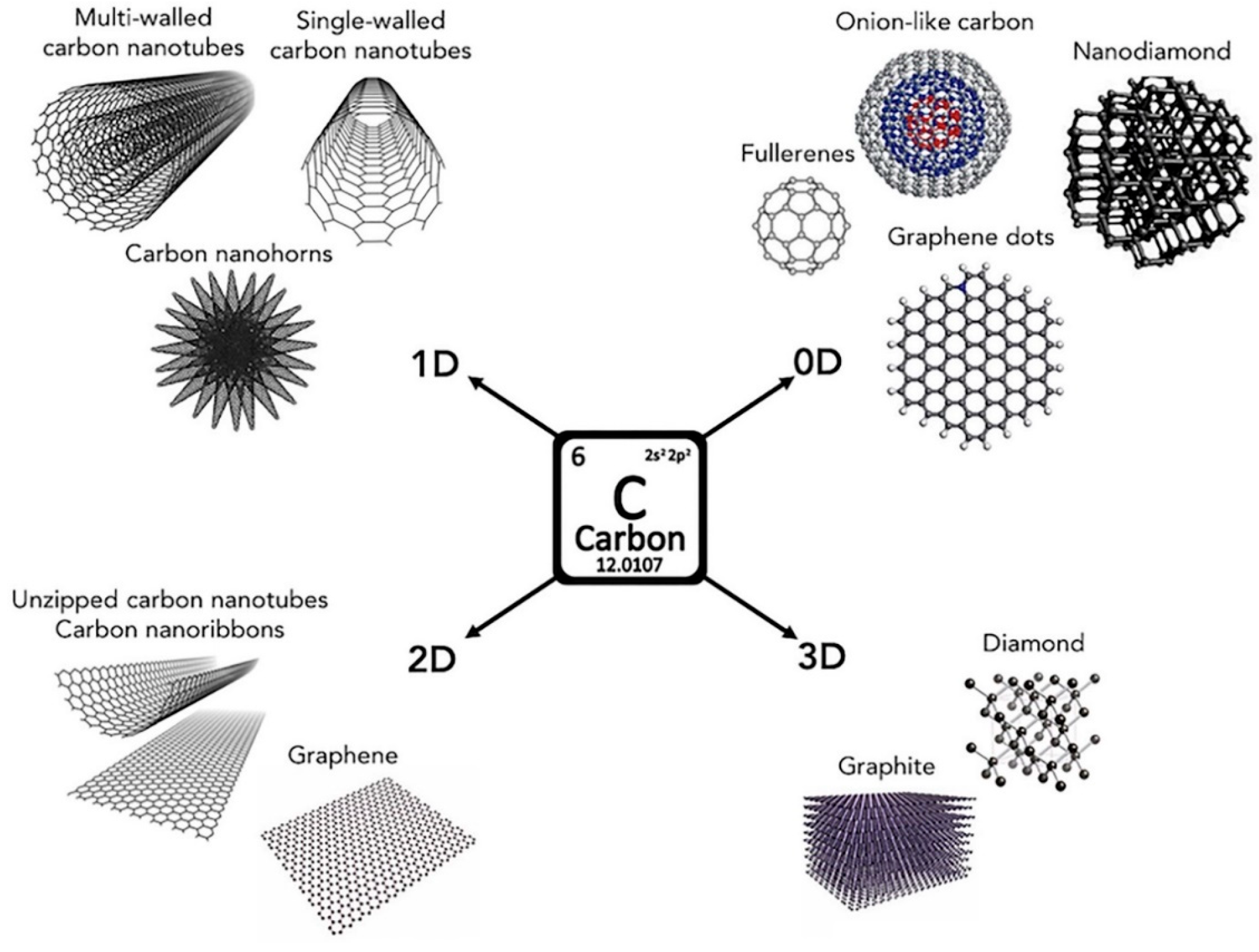
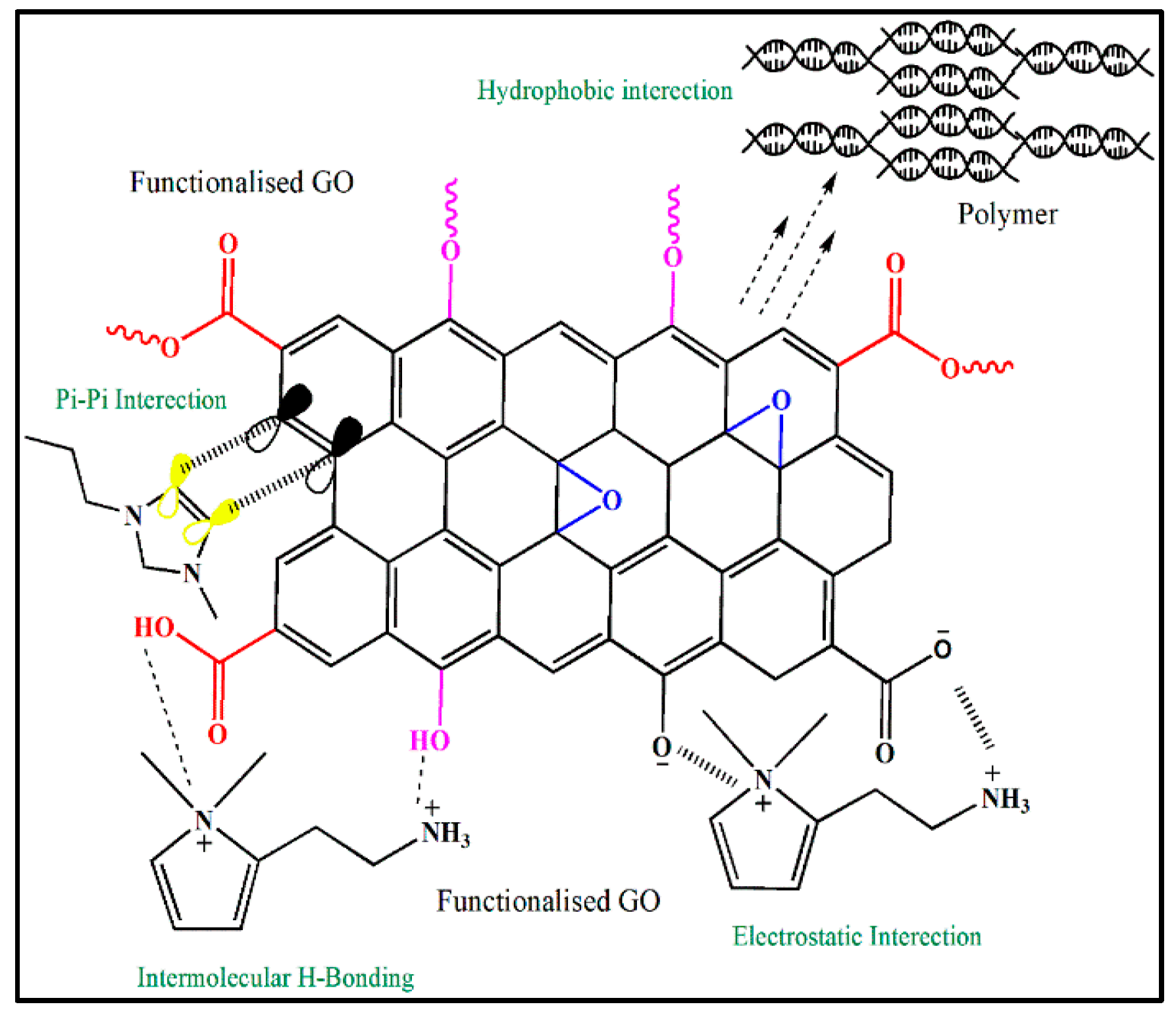

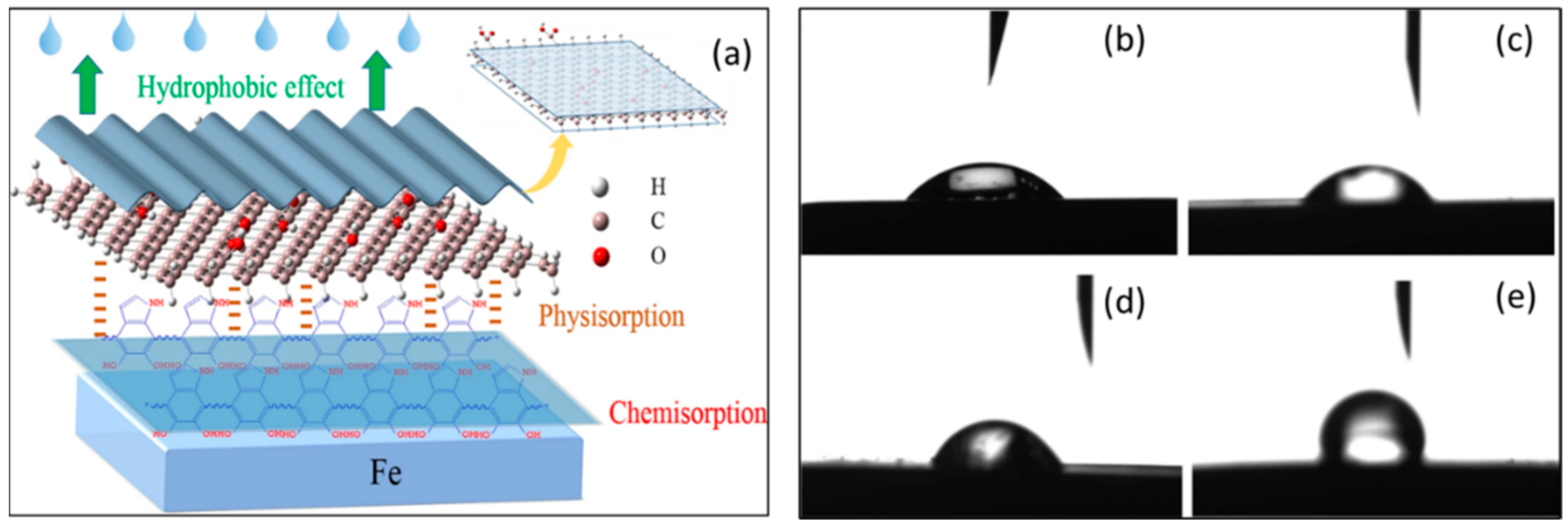
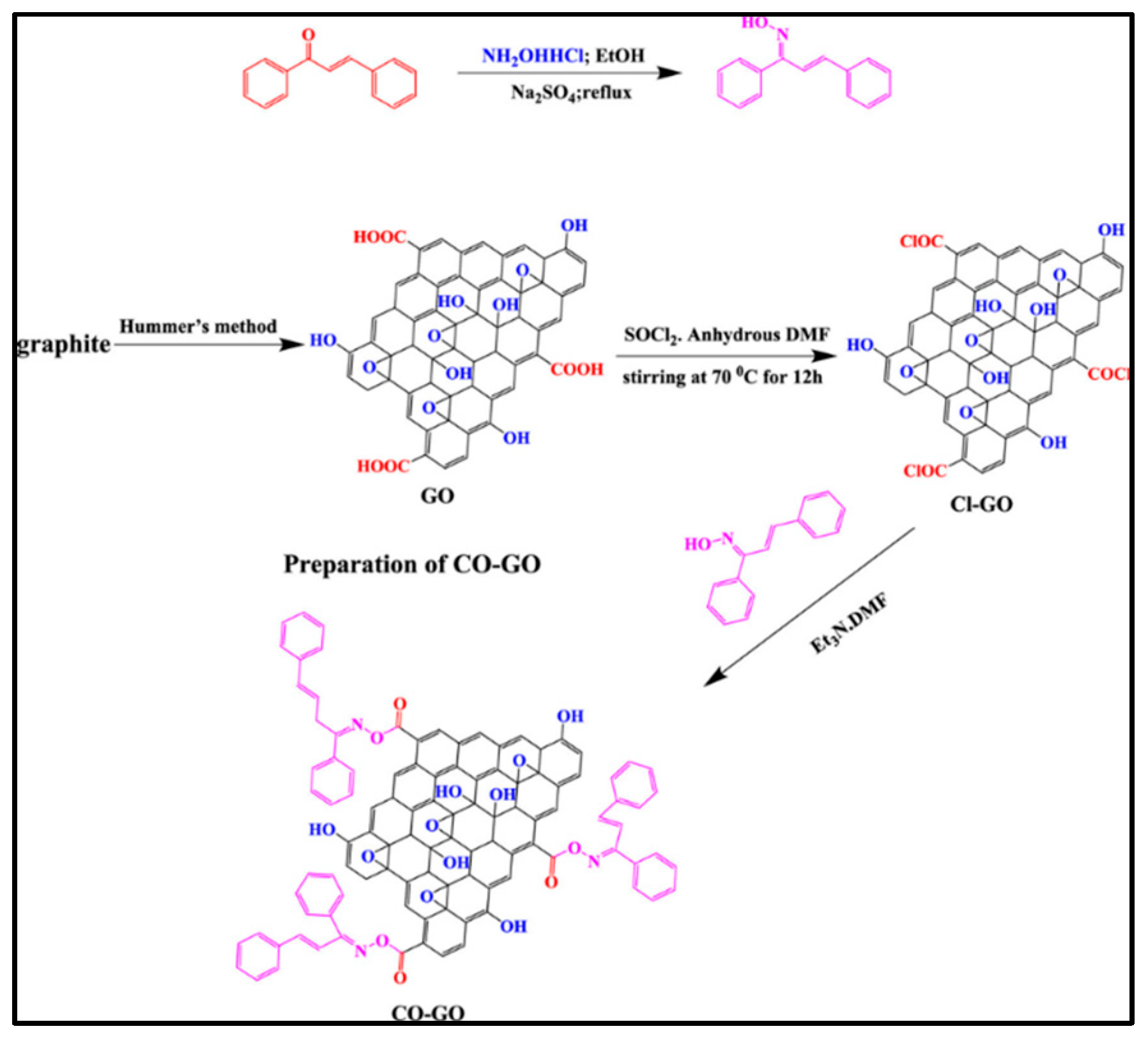

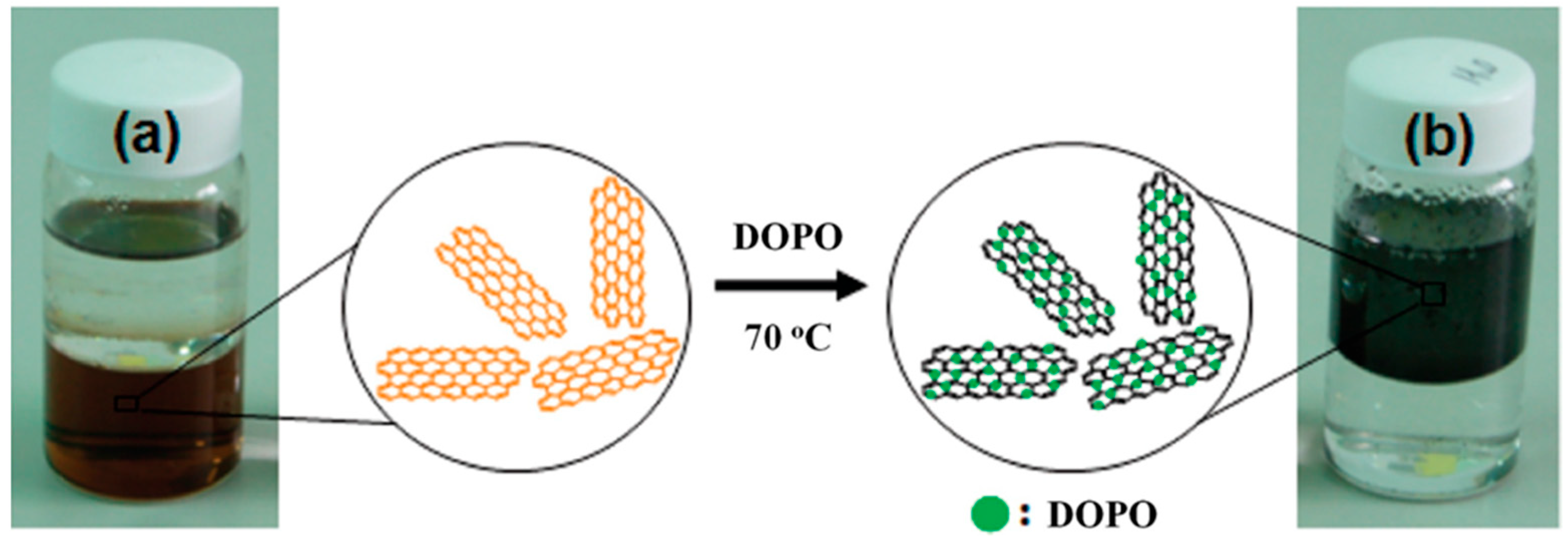
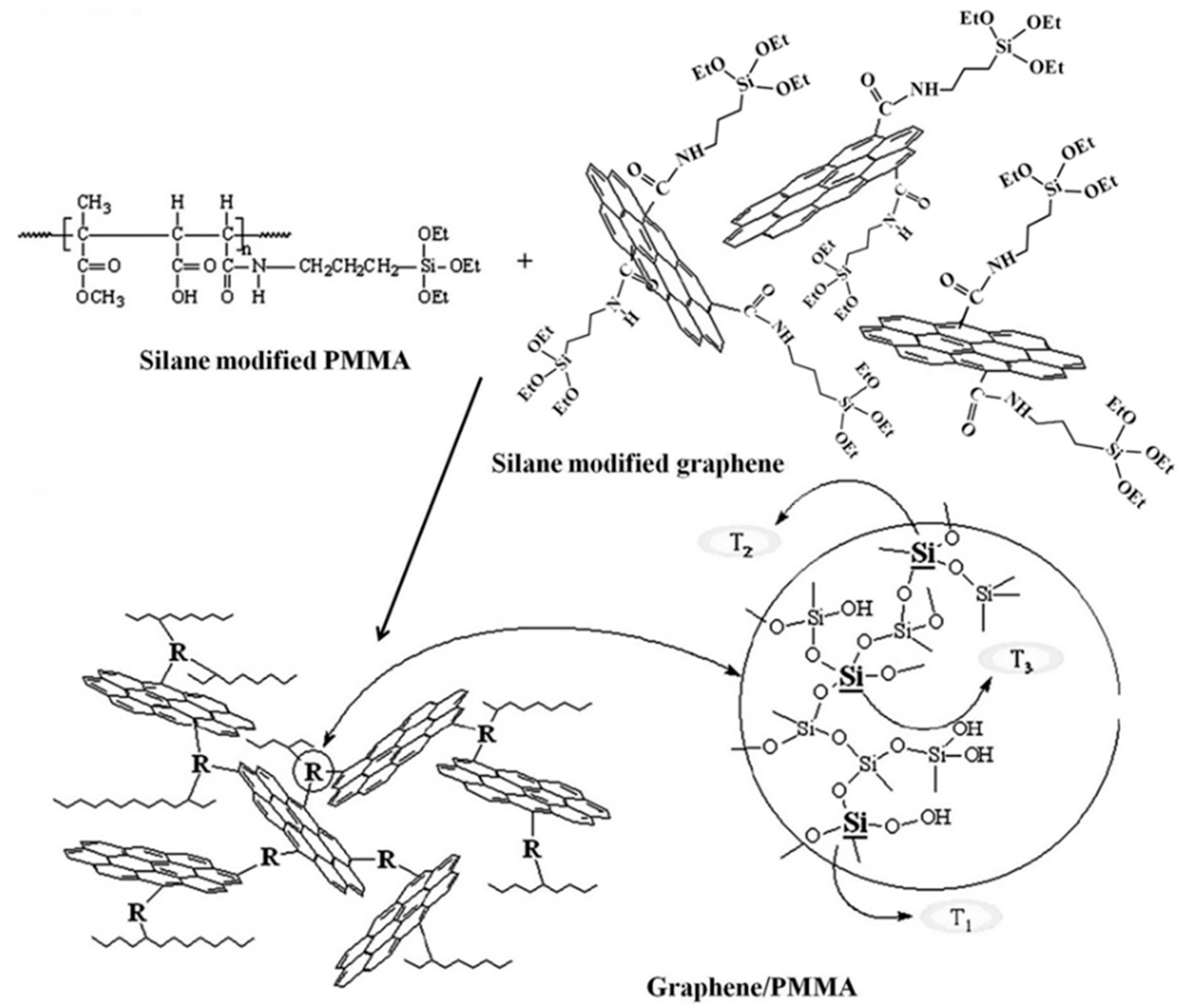
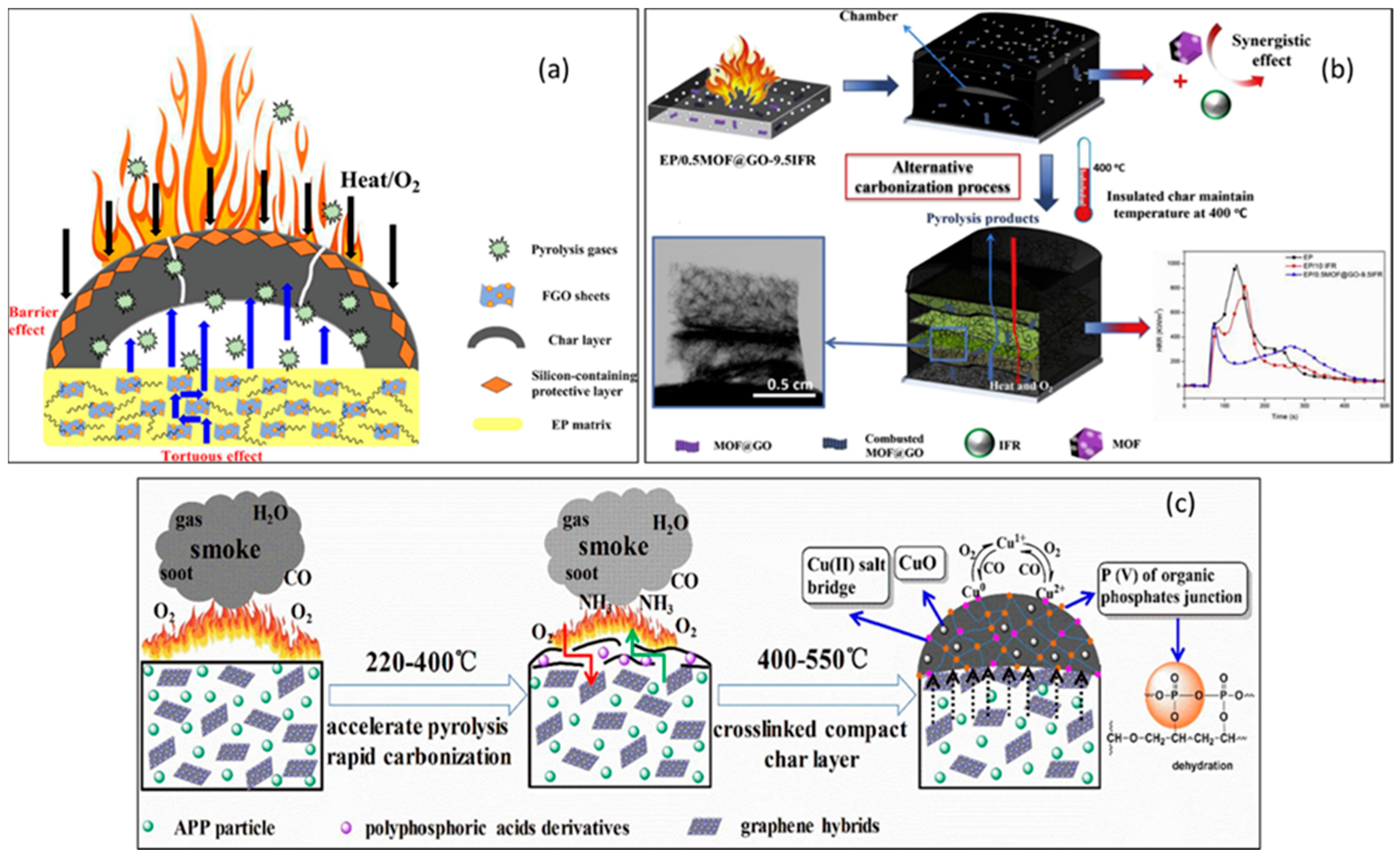
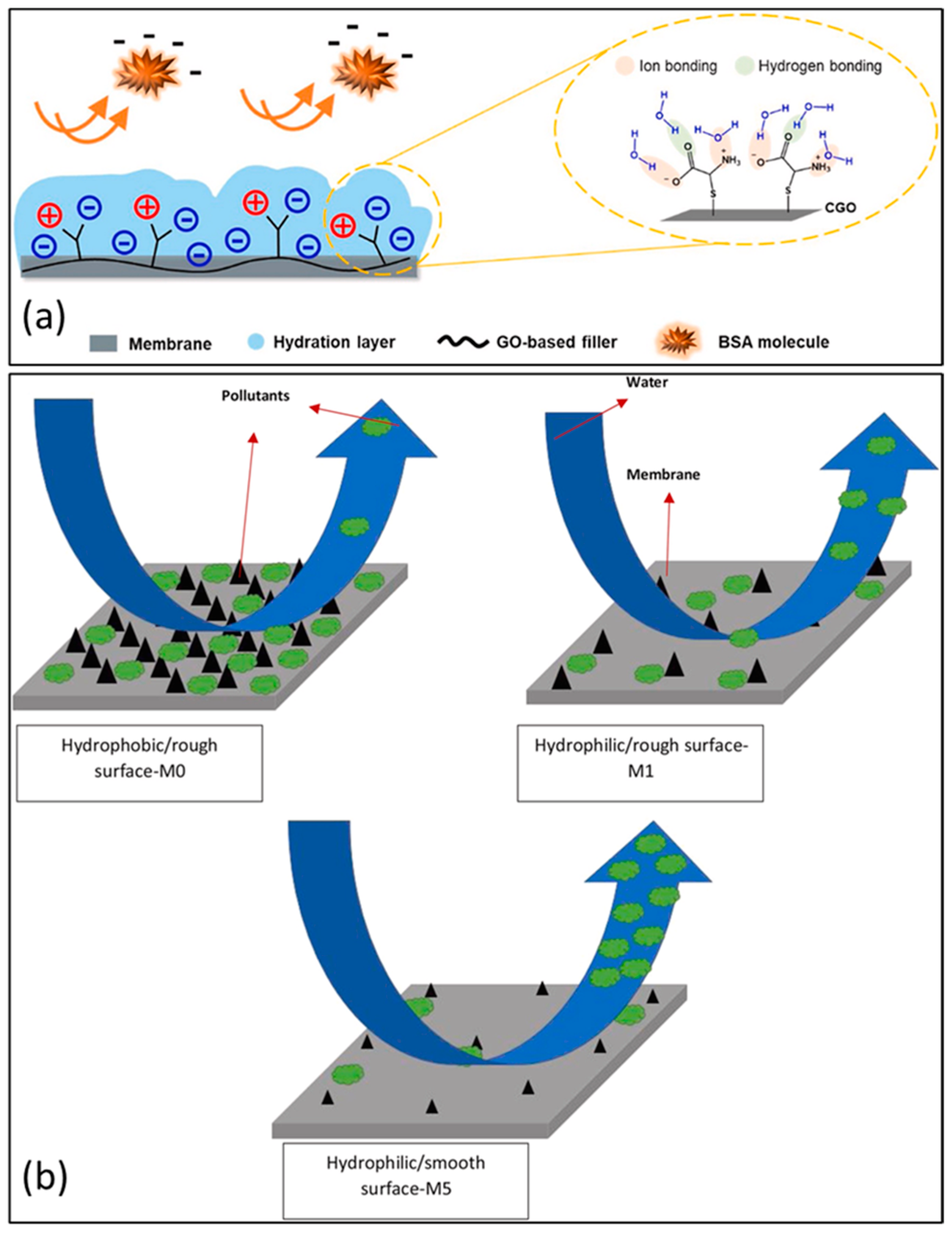
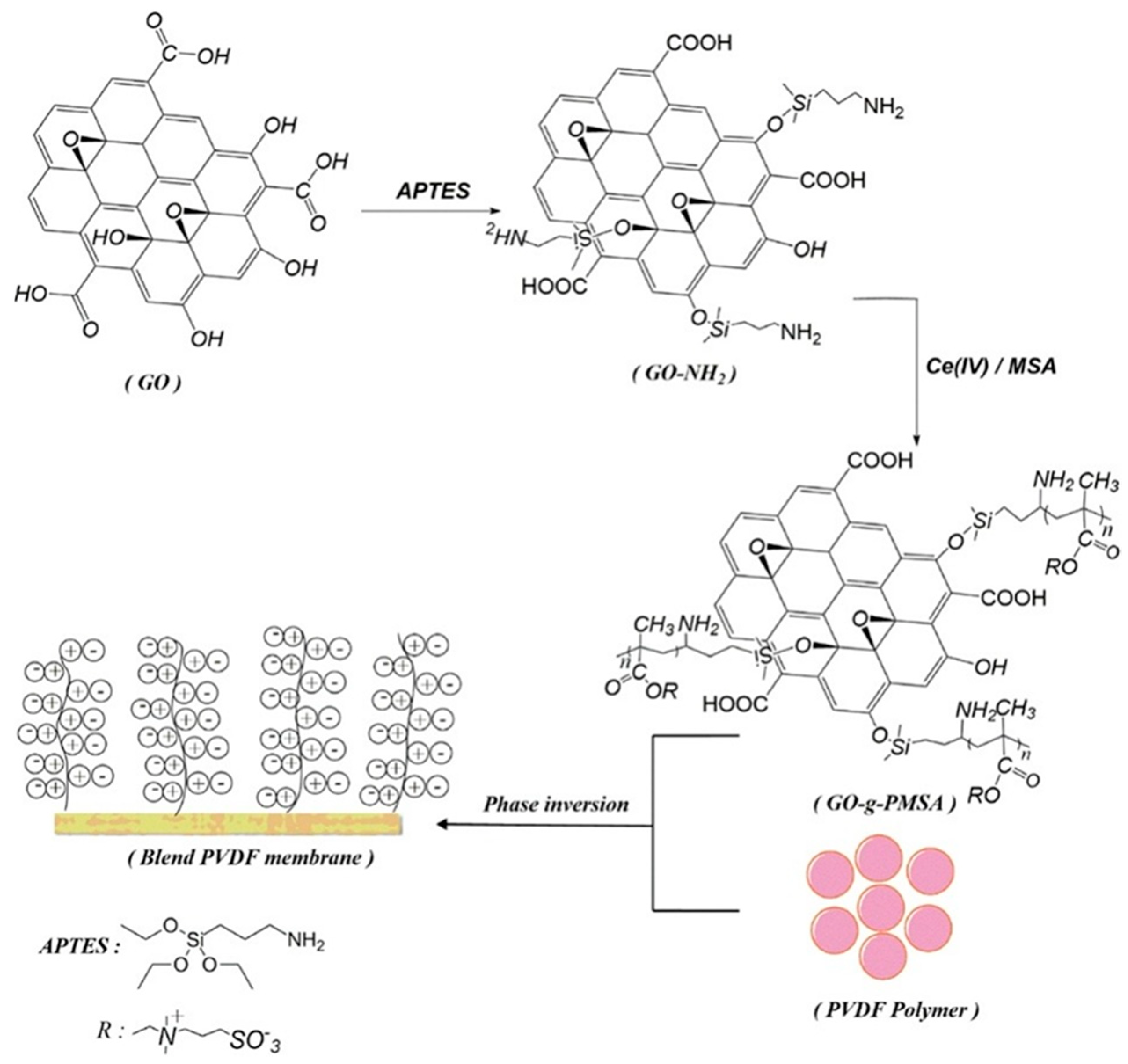
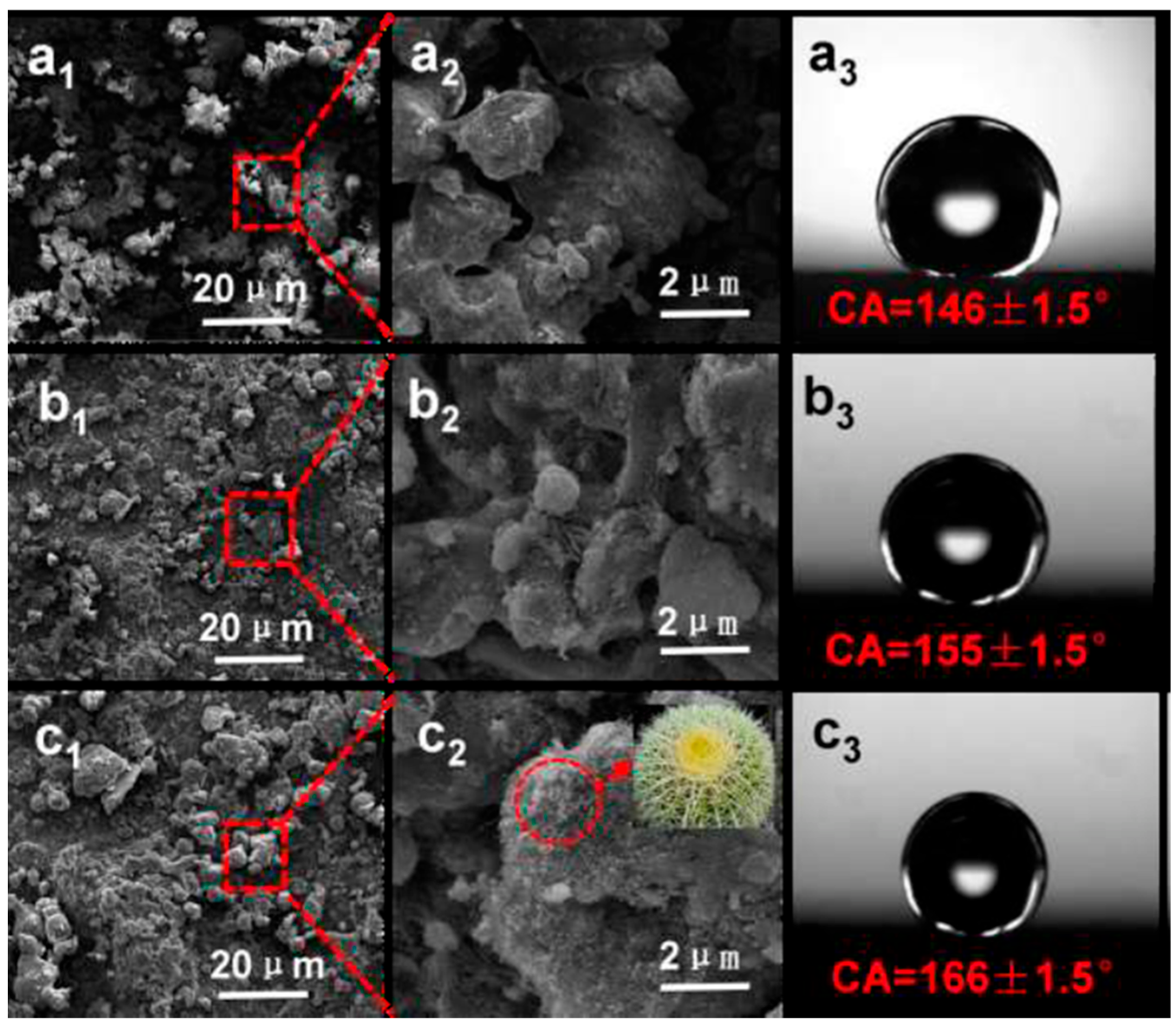
| S.N. | Functional Group | Medium | Metal | Concentration of Inhibitor | Inhibition Efficiency (%) |
|---|---|---|---|---|---|
| 1 [49] | 1-tetradecylpyridazin-1-ium iodide | 1.0 HCl | Carbon Steel | 10−3 M | 97.6 |
| 2 [50] | Schiff base | 1mM HCl | Steel | 1 mM | 92.0 |
| 3 [51] | Benzotriazole | 0.5 M Na2SO4 | Galvanized steel | 2.9 × 10−3 M | 90 |
| 4 [52] | L-cysteine | 1 wt% NaCl | Alloy Steel | 400 ppm | 65.7 |
| 5 [53] | Polylactic acid/2-mercaptobenzothiazole | 1 M HCl | Alloy aluminum | 0.5 mass ration | 33.83 |
| 6 [54] | Imidazoline | 1.65 wt% NaCl con. 1 g/L acetic acid | Carbon steel | 0.1 g/L | 99.3 |
| 7 [55] | N-(quinolin-8-yl) quinoline-2-carboxamide | 1 M HCl | Mild steel | 0.3 mmol L−1 | 94 |
| 8 [56] | (6-methyl-3-oxopyridazine-2-yl) acetate | 1 mM HCl | Mild steel | 10−1 mM | 66.7 |
| 9 [57] | Benzotriazole | 3.5 wt% NaCl | Copper | 0.45 mM | 92.31 |
| 10 [58] | 2-(4 -nitrophenyl) benzimidazole | 1 mM HCl | Carbon steel | 1 mM | 93.7 |
| 11 [59] | Adenosine | 0.5 M HCl | Tin | 10−3 M | 73.0 |
| 12 [60] | 1,8-Naphthyridine | 1 M HCl | Mild steel | 0.00004 M | 98.7 |
| 13 [61] | Octadecyl amine | 10−3 M Na2SO4 | Carbon Steel | 100 mgs kg−1 | 90 |
| 14 [62] | Potassium 2,4-di(2H-benzo[d][1,2,3] triazol-2-yl)benzene1,3-bis(olate) | 3.5 wt% NaCl | Copper | 0.30 mM | 96.7 |
| 15 [63] | 4-Chloro-1H-indazole | 3.0 wt% wt% NaCl | Copper | 0.4 mM | 98.9 |
| 16 [49] | Triazole–theophylline | 1 M HCl | Steel | 50 ppm | 87 |
| 17 [64] | 4-(3-Mercapto-5,6,7,8-tetrahydro-[1,2,4]triazolo[4,3- b][1,2,4,5]tetrazin-6-yl)phenol | 1 M HCl | Mild Steel | 0.5mM | 67 |
| 18 [65] | 1,2,4-Triazole | 3 wt% NaCl | Copper | 10 mM | 98 |
| 19 [66] | N2,N4,N6-tris(3-(dimethylamino)propyl)-1,3,5-triazine-2,4,6-triamine | 0.5 M | Mild Steel | 1.0 mM | 95.8 |
| 20 [67] | N-ethyl-N,N,Ntrioctylammonium ethyl sulfate | 1 M H2SO4 | steel | 100 ppm | 83 |
| 21 [68] | 1-benzyl-4-phenyl-1H-1,2,3-triazole | 1.0 M HCl | Mild Steel | 2.13 mM | 81.7 |
| 22 [69] | 2-amino-4,6-bis-(3-hydroxy-4-methoxy-phenyl)-5-nitrocyclohex-2-ene-1,3,3-tricarbonitrile | 1 M HCl | Mild Steel | 25 ppm | 98.96 |
| 23 [70] | 6-(Dodecyloxy)-1H-benzo[d]imidazole | 1 M HCl | Mild Steel | 10−4 M | 95.0 |
| 24 [71] | (1-(pyridin-4-ylmethyl)-1H-1,2,3- triazole-4-yl) methanol | 1.0 M HCl | Mild Steel | 1.0 mM | 90.2 |
| S.N. | Polymer | Loading | Main Results |
|---|---|---|---|
| 1 [74] | Epoxy | 10 (Functionalized graphene) | Compared with pure epoxy, the char yield was increased to 30.2% from 16.7% and the GO/epoxy had a char yield of 21.1%; the limiting oxygen index (LOI) increased to 26% from 20% and the GO/epoxy had a char yield of 23%, respectively, when compared with pure epoxy. |
| 2 [75] | Epoxy | 10 (Functionalized graphene) | According to the UL-94 V-0 test (3.2 mm), the pristine graphene/epoxy composite showed a limiting oxygen index (LOI) value of 36%; however, the pristine graphene/epoxy composite had a LOI value of 26%, which was not high enough to pass the test. |
| 3 [76] | XLPE | 3 (Functionalized graphene) | Cone calorimetry observed a 29% reduction in PHRR, whereas GO/XLPE observed a 9% reduction. |
| 4 [77] | PP | 20 (Functionalized graphene) | PPA/PP composites showed a 67% and 24% reduction in PHRR and THR, respectively, whereas the PPA/PP composites showed 48% and 20% reductions, respectively. |
| 5 [78] | Epoxy | 8 (Functionalized graphene) | PPA/epoxy composites reduced both the PHRRs and THRs by 41% and 50%, respectively, whereas composites based on PPA-g-GNS/EP composites reduced them by 35% and 46%, respectively. |
| 6 [79] | EVA | 1 (Functionalized graphene) | Pure GO/EVA exhibited a reduction of 46% in PHRR and TTI of 75 s, whereas EVA/CRG–PPSPB achieved reductions of 31% and 61 s. |
| 7 [80] | Epoxy | 1 (Functionalized graphene) | A 45% reduction in PHRR was observed from pyrolysis–combustion-flow calorimetry, while that of GO/epoxy was only 18%. |
| 8 [81] | EVA | 2 (Functionalized CNTs) | 24.4% reduction in PHRR observed |
| 9 [82] | UPR | 2- (Functionalized CNTs) | 72% reduction in PHRR observed |
| 10 [83] | PVDF | 3 (Functionalized CNTs) | 57.7% reduction in PHRR observed |
| S.N. | Coating | Material/Matrix | Organism | Experimental Setup | Main Conclusions |
|---|---|---|---|---|---|
| 1 [95] | Graphene Oxide | Marine micro- and macrofoulers | Escherichia coli Staphylococcus aureus Pseudomonas aeruginosa | In vitro study Nutrient medium Ambient temperature After 24 and 48 h | Bacteria grew much slower on graphene-oxide-coated surfaces in vitro and were less likely to foul the surfaces in situ (up to 94% fewer viable cells). |
| 2 [96] | Graphene Oxide | Alkyd resin | Marine micro- and macrofoulers | In situ study South Korea’s seawater (Jeju Sea) A period of three weeks | |
| 3 [97] | Graphene Oxide | Silicone rubber | Triceratium sp. | In vitro study A medium containing algal broth at a temperature of 25 °C Static assay (8 days) Assays in the dynamic mode In the vicinity of specimens, the linear velocity was 3.4 m/s for 10 days. | A single graphene oxide loading (0.16 wt%) responded slightly to diatom antiadhesion conditions (approximately 12% reduction in OD under static conditions). An approximate 67% OD reduction was observed for only one graphene oxide loading (0.36 wt%) in the dynamic assay. |
| 4 [96] | Graphene Oxide | Calcium ion selective membrane electrode | Marine bacteria | In vitro study Luria–Bertani medium Ambient temperature 1 hr and 5 hr | In comparison to the noncoated sensor, the graphene oxide-coated sensor significantly inhibited the formation of biofilms (roughly 45% decrease in CFUs) by significantly improving antiadhesion and bacterial inactivation properties. |
| 5 [98] | Graphene | Silicone rubber | Paracoccus pantotrophus | Study conducted in vitro Seawater artificially created Assay conducted in a quasi-static environment (7 days) Assay conducted in a dynamic environment. In seven days, speeds varied within a range of 0.2 to 0.5 m/s. | As compared to the rigid polystyrene sheet control surface, graphene–silicone membranes demonstrated similar antifouling performance under quasistatic conditions. As compared with control surfaces, graphene-based membranes reduced colony-forming units (CFU) by around 40% under dynamic conditions. |
| 6 [99] | Graphene | Silica | Halomonas spp. | Study conducted in vitroSolution of sodium chloride(0.5 wt%)20 °C, 72 h | The graphene coatings decreased biofilm-producing bacteria, Halomonas spp., adhesion and adhesion gene expression. |
| 7 [100] | Guanidine- functionalized graphene | Boron acrylate polymer | Escherichia coli Staphylococcus aureus | Study conducted in vitro Luria–Bertani medium 37 °C, 12 h | A 95% reduction in bacterial growth was observed in the coatings, along with an antiadhesion rate of 99% for diatoms. Neither fouling adhesion nor surface degradation were observed during the field trial. |
| 8 [100] | Guanidine- functionalized graphene | Boron acrylatepolymer | Phaeodactylum tricornutum Nitzschia closterium f. minutíssima Halamphora sp. | Study conducted in vitro F/2 medium 21 °C, 14 days | |
| 9 [100] | Guanidine- functionalized graphene | Boron acrylate polymer | Marine micro- and macrofoulers | 2 months of in situ study of natural seawater (Yellow Sea, China) | |
| 10 [93] | Acrylic acid-modified graphene oxide | Acrylic resin | Marine micro- and macrofoulers | Study conducted in situ Natural seawater (Zhoushan Sea, China) 6 months | The antifouling performance of composite-based paints was demonstrated during the testing process using natural seawater as the testing medium. |
| 11 [101] | Polyaniline/p-phenylenediamine-functionalized graphene oxide | Epoxy resin | Simulated marine micro- and macrofoulers | Study conducted in vitro Simulated marine environment 25–27 °C, 3 months | A functionalized graphene oxide composite was added to commercialized epoxy coatings to improve their anticorrosion properties. |
| 12 [102] | CNTs | Silicone oil-infused epoxy resin | Chlorella sp. Phaeodactylum tricornutum | Study conducted in vitro Artificial seawater 22 °C, 21 days | On surfaces coated with CNTs and epoxy resin, algae settlement rates were significantly lower than on surfaces coated with epoxy resin alone. Silicone oil infused into CNTs and epoxy resin coatings was even more effective in reducing the growth of algae biofilms (up to 90% reduction in cells) than silicone oil in CNTs alone. |
| 13 [103] | MWCNTs | Chlorinated rubber | Pioneer eukaryotic biofilm communities | An in situ study was conducted (1.5 m below the surface) Chinese seawater (Xiaoshi Island) A temperature of 10 °C and a duration of 312 days | A significant reduction in mean species richness was observed by incorporating MWCNTs into antifouling materials (p 0.01) due to the reduced diversity and abundance of pioneer eukaryotic microbes. |
| 14 [104] | MWCNTs | PDMS | Mytilus galloprovincialis-based foulers | An in vitro study was conducted An assay based on static data Seawater that has been filtered Temperature: 18 °C Plantigrades took six hours; pediveligers took 48 h. | Mussels’ adhesion and settlement were not affected by MWCNT incorporation compared to PDMS or PDMS alone. |
| 15 [105] | MWCNTs | PDMS | Ulva linza | Dynamic assay conducted in vitro Seawater made from artificial sources The experiment was conducted for six days at 18 °C. | It appeared that adding MWCNTs to PDMS alone did not improve sporeling release properties. |
| 16 [106] | MWCNTs | PDMS | marine micro- and macrofoulers | An in vitro study was conductedAssays that are dynamic The hull of a ship traveling at 15 knots (such as a ship's hull) Seawater made from artificial sources A temperature of 28 °C It takes 45 min for zoospores to settle; 7 days for sporelings to grow It takes 24 h for the adhesive to settle; it takes 3 months to determine its adhesion strength | By adding MWCNTs, sporeling release was enhanced (approximately 60%). A significant reduction in adhesion strength of adult barnacles growing on MWCNTs/PDMS was observed. |
| 17 [107] | MWCNTs | PDMS | Bacteria and diatoms | A study conducted in situ (0.5–1.0 m below ground level) Water from the sea (Zhoushan, China) A 28-day period | Compared to bare PDMS, MWCNTs decreased mussel settlement (up to a 20% reduction) by altering the biomass and community composition of biofilms. |
| 18 [107] | MWCNTs | PDMS | Mytilus coruscus (mussels and plantigrades) | An in vitro study was conducted Seawater that has been autoclaved and filtered The experiment was conducted at 18 °C for 12 h | |
| 19 [108] | Hydroxyl-modified MWCNTs | Silicone-oil-infused PDMS | Marine bacteria | An in vitro study was conducted Seawater fresh from the sea The temperature was maintained at 28 °C for ten days | Antiadhesion (up to 35% higher removal rate) and AF properties were enhanced, particularly when higher volume ratios of hydroxylated MWCNTs were used. |
| 20 [108] | Hydroxyl-modified MWCNTs | Silicone-oil-infused PDMS | Marine micro- and macrofouler | The study was conducted in situ (1–2 m below the surface) A natural seawater sample (Yellow Sea, China) A period of eight months | |
| 21 [109] | Carboxyl and hydroxyl-modified MWCNTs | PDMS | Pioneer eukaryotic biofilm communities | A study conducted in situ (0.8-1.5 m below ground level) Water from the sea (Xiaoshi Island, China) A period of two months | The incorporation of MWCNTs showed excellent AF performance and effectively reduced colonization by pioneer eukaryotes, in comparison to plain PDMS (Shannon diversity index, p < 0.05). |
| 22 [110] | Carboxyl and hydroxyl-modified MWCNTs | PDMS | Marine micro and macrofoulers | The study was conducted in situ (1.5 m below the surface) Chinese seawater (Weihai Western Port) A temperature of 11 °C, a duration of 56 days | The incorporation of a low amount of MWCNTs greatly improved the AF properties of PDMS coatings. Most modified coatings did not display any significant modulating effects on pioneer biofilm communities, as compared to plain PDMS. |
| 23 [111] | Fluorinated MWCNTs | Silicon | Escherichia coli | An in vitro study was conducted A phosphate-buffered saline solution Temperature 37 °C, 6 h | In vitro study Phosphate-buffered saline 37 °C, 6 h |
| 24 [112] | Fluorinated MWCNTs | PDMS | pseudobarnacles | Method for pseudobarnacle adhesion testing | Incorporating fluorinated MWCNTs into the PDMS matrix increased the adhesive properties of the FR layer by reducing the pseudobarnacle adhesion strength by 67% compared to bare PDMS, and by 47% compared to pristine MCWNT/PDMS matrix. |
| 25 [113] | -Carboxyl and hydroxyl-modified MWCNTs -Graphitized MWCNTs -Carboxyl-modified SWCNTs | PDMS | Pioneer biofilm bacteria | An in situ study was conducted (1.5 meters below the surface) A natural seawater spring on the Chinese island of Xiaoshi Temperatures between 10 °C and 17 °C, 24 h | All CNT/PDMS composites decreased proteobacteria biofilm formation, but increased cyanobacteria biofilm development. |
| 26 [114] |
| S. epidermidis | - | Results revealed that the surface coverage percentage of S. epidermidis drops more than 50% from the unmodified to the modified film. | |
| 27 [115] |
| poly(methyl methacrylate) (PMMA) | S. aureus S. mutans C. albicans | - | Significant antiadhesive effects (35–95%) against all tested bacteria were verified for the 1% CNT/PMMA compared to the PMMA control group. |
| 28 [116] |
| Polyethylene (PE) | P. fluorescens M. smegmatis | - | Biofilm growth on PE-CNTs composites surface compared to PE decreased by 89.3% and 29% for P. fluorescens and Mycobacterium smegmatis, respectively. |
| S.N. | Model System | Biomimicked Features | Biomimicked Properties | Biomimicked Coating Material | Coating Method | References |
|---|---|---|---|---|---|---|
| 1 | Lotus and Xanthosoma Sagittifolium leaves | Superhydrophobic surface | Corrosion resistance | Polymer (polybenzoxazine) | Templating by leaves | [193] |
| 2 | Dragonfly wings | Nanostructures | Mechanobactericidal behavior | Palmitic and stearic acid films onto HOPG | Surface recrystallization by self-assembly | [194] |
| 3 | Cicada wing surfaces | Nanopillar/Nanodagger-shaped microstructure | Bacterial capture | ZIF MOFs | Dip coating | [195] |
| 4 | Endothelium | Endothelium functions | Controllable heparin anchoring and NO release properties | Metal–catechol–amine | Surgace Engineering | [196] |
| 5 | Natural superhydrophobic surfaces | Superhydrophobic surface | Superhydrophilic/superhydrophobic surfaces | Branched poly(ethylenimine) (BPEI) and dipentaerythritol pentaacrylate (5Acl) | “Chemically reactive” dip-coating | [197] |
| 6 | Bristle worm (Calliteara pudibunda) | Superhydrophobic surface | Anticorrosion and antiscaling, self-cleaning, and antifouling properties | Composites of polyphenylene sulfide (PPS), expandable graphite (EAG), and elastic fluororubber | - | [198] |
| 7 | Earthworm | Secretion behavior under extra stimulation | Friction-reduction and antifouling | PDMS | Solution casting | [199] |
| 8 | Wood | Plant cell wall tissue | Controllable architecture viscoelasticity | Nanocellulose, lignin | Layer-by-layer (LbL) assembly | [200] |
| 9 | Owls | Velvety coating on feather surface | Flight sound reduction and Aerodynamics | Nylon fibers | Electrostatic flocking | [201] |
| 10 | Willow-leaf-like or wheat-haulm-leaf-like | Superhydrophobic surface | Corrosion resistance | PTFE/PPS_nanofibers/spheres | Coating-curing process | [202] |
| 11 | Human skin | Wrinkles | Mechanics of wrinkling at micro nanoscale | TiN on polyurethane, polycarbonate, polyamide, and polyimide | Pulsed laser deposition | [203] |
| 12 | Human bones | Orthopedic and dental binding | Bone-bonding ability | Yttria-stabilized tetragonal zirconia and CaP | Apatite coating technique by femtosecond laser processing | [204] |
| 13 | Psyllipsocus yucatan | Wing membranes surface coating | Surface coating | Iron, oxygen, and carbon | Natural coating | [205] |
| 14 | Polypedilum vanderplanki larvae | Cuticle (exoskeleton) | Protective layer | Polyphenol at air/solid interface catalyzed by gaseous oxygen | Aerobic oxidation | [206] |
Publisher’s Note: MDPI stays neutral with regard to jurisdictional claims in published maps and institutional affiliations. |
© 2022 by the authors. Licensee MDPI, Basel, Switzerland. This article is an open access article distributed under the terms and conditions of the Creative Commons Attribution (CC BY) license (https://creativecommons.org/licenses/by/4.0/).
Share and Cite
Kumar, A.; Barik, B.; Jablonski, P.G.; Sonkaria, S.; Khare, V. Functionalized and Biomimicked Carbon-Based Materials and Their Impact for Improving Surface Coatings for Protection and Functionality: Insights and Technological Trends. Coatings 2022, 12, 1674. https://doi.org/10.3390/coatings12111674
Kumar A, Barik B, Jablonski PG, Sonkaria S, Khare V. Functionalized and Biomimicked Carbon-Based Materials and Their Impact for Improving Surface Coatings for Protection and Functionality: Insights and Technological Trends. Coatings. 2022; 12(11):1674. https://doi.org/10.3390/coatings12111674
Chicago/Turabian StyleKumar, Aniket, Bapun Barik, Piotr G. Jablonski, Sanjiv Sonkaria, and Varsha Khare. 2022. "Functionalized and Biomimicked Carbon-Based Materials and Their Impact for Improving Surface Coatings for Protection and Functionality: Insights and Technological Trends" Coatings 12, no. 11: 1674. https://doi.org/10.3390/coatings12111674
APA StyleKumar, A., Barik, B., Jablonski, P. G., Sonkaria, S., & Khare, V. (2022). Functionalized and Biomimicked Carbon-Based Materials and Their Impact for Improving Surface Coatings for Protection and Functionality: Insights and Technological Trends. Coatings, 12(11), 1674. https://doi.org/10.3390/coatings12111674






